
Mailing address: 31855 Date Palm Drive, No. 3-263, Cathedral City, CA 92234 775-324-4440 • RenoNR.com
Publisher/Executive Editor
Jimmy Boegle
Managing Editor
Kris Vagner
Editor at Large
Frank X. Mullen
Photo Editor
David Robert
Cover and Feature Design
Dennis Wodzisz
Distribution Lead
Rick Beckwith
Contributors
Alicia Barber, John Barrette, Matt Bieker, Maude Ballinger, Lucy Birmingham, Brad Bynum, Alan De Queiroz, Zoe Dixon, Loryn Elizares, Bob Grimm, Michael Grimm, Helena Guglielmino, Matt Jones, Matt King, Michael Moberly, Steve Noel, Dan Perkins, Carol Purroy, David Rodriguez, Jessica Santina, Jason Sarna, Brianna Soloski, Delaney Uronen, Robert Victor, Matt Westfield, Leah Wigren
The Reno News & Review print edition is published monthly. All content is ©2024 and may not be published or reprinted in any form without the written permission of the publisher. The RN&R is available free of charge throughout Northern Nevada, limited to one copy per reader. Additional copies may be purchased for $5 by calling 775-324-4440. The RN&R may be distributed only authorized distributors.
The RN&R is a proud member of the Association of Alternative Newsmedia, the Nevada Press Association, and the Local Independent Online News Publishers. Coachella Valley Independent, LLC, is a certified LGBT Business Enterprise® (LGBTBE) through the NGLCC Supplier Diversity Initiative.


EDITOR'S NOTE
In an ever-struggling industry, here’s what gives me hope
The news about media outlets struggling and folding was dire enough as of last fall, when The Associated Press reported that the U.S. had “lost one-third of its newspapers and two-thirds of its newspaper journalists since 2005.” In the first two months of this year, the list of media outlets scaling back or shuttering entirely grew even longer.
In January, the Los Angeles Times laid off more than 100 journalists; Sports Illustrated announced significant staff cuts that left the magazine’s fate in question; and Pitchfork folded into GQ magazine, effectively ending its decades-long reign as a major source of quality music criticism.

In February, NPR cut 10 percent of its staff, and Vice, once valued at $5.7 billion, announced that it will shut down its website. Closer to home, The Nevada Independent announced that—between voluntary departures over the last year and recent layoffs due to budget issue—the staff of this important, statewide news outlet is now just more than half the size it was a year ago. I can only imagine we’ll see more such news in March.
Long story short: Newspapers used to make enough to get by on classified ads, print ads and subscription fees, and all three of those have ceased to be viable revenue streams, so the news industry finds itself forced to find a way to rebuild its revenue model in order to survive—and survive, we must. Where there are no news outlets, voter participation declines; the powerful go unchecked; and corruption flourishes. Where there is no local news, important stories about the people in a given community go untold. People feel more disconnected.


bed each day to continue getting out the news? Well, as dismal as the above statistics are, there is one thing that provides me with an unshakeable source of hope. It is this: Our young people are amazing. The up-and-coming reporters who work with the RN&R are truly inspiring—like, mind-bogglingly, how-did-we-get-so-lucky inspiring. With them on our team, my sense of hope works like one of those trick birthday candles: The second it’s extinguished, it flares right back up. Journalists in their 20s—and teens, as one of our reporters is in high school—face a career ladder that barely exists anymore. They maintain other jobs, sometimes multiple other jobs, and work for us on the side. That—plus the fact that we all work remotely now—makes acquiring reporting skills and institutional knowledge a slower, more difficult process than it would be if we were all working side-byside in a newsroom together all day. But our young reporters are not deterred. They ask great questions; they learn fast; and they work much harder than their paychecks would belie.
The reason they have such iron-clad work ethics is because they care. They care about participating in civic life. They care about seeking the truth. They care about getting useful, verified information to people who need it. They care about telling great stories. They care about seeing things from more than one angle, about understanding other people’s points of view. They care about social justice and equality. They care about amplifying the voices who don’t always get their due. They care about making sure you know about the inspiring things that the people in our arts, music and literature communities are doing. They make me proud and get me through until quitting time—every single day.
Not all of our contributors are in their teens or 20s. Some of our writers are retirement-age, while some are news professionals who’ve been building their skill sets for a decade. Some are juggling families and full-time jobs, and they still make time to help the RN&R keep reporting news and finding great stories to tell.
Props to the entire team. I cannot imagine attempting to grin and bear the news industry’s ongoing existential crisis without you.
The working conditions in journalism have never been cushy. Over the last two decades, they’ve gotten continually less comfortable. Job security has tanked. Salaries don’t come anywhere near keeping up with the ever-rising cost of living—and, in many cases, industry leaders take no salary at all. Of the hundreds of digital news publications that have launched to fill the news-coverage gaps left open all over the country, many are run by industry veterans who are full-time volunteers.
This is all, to say the least, stressful. I don’t think I’ve unclenched my jaw since I started this job in September.
So what keeps me getting out of

2 | RN&R | March 2024 | RenoNR.com
March 2024 | Vol. 30, Issue 1
Cover photo by Alan De Queiroz
GUEST COMMENT
BY MICHEL ROTTMAN
Patriotism based on blind loyalty to a person or party is a true existential threat to the
Both sides in this presidential election claim there is an existential threat to our republic should the other side win. Democrats point to things like Donald Trump’s actions and inactions during the attack on our Capitol on Jan. 6, while Republicans point to things like Joe Biden’s management of migrants, particularly at our southern border; Biden possibly taking bribes related to business dealings of his son, Hunter; and Biden’s age. (He’s 81, while Trump is 77.) Let’s compare threats.
Biden’s management of migrants Republicans complain that Biden is attracting migrants to our southern border who would not otherwise risk the journey, because his policies are too mi grant-friendly. Treating migrants without compassion or dignity, however, might provide partial relief in the short-term, but it creates justifiable long-term hatred and distrust not just at the border, but on a global scale that will surely increase unless underlying problems are addressed. It also demonstrates to the world that our claims to a moral high ground are hogwash, which, in the long term and maybe the short, makes us more unsafe, at increasing expense.
U.S.
6 attack on our Capitol, is the very definition of an existential threat to the Republic.
Biden taking bribes
To date, the judiciary and the oversight committees in the House of Representatives have found no smoking-gun evidence of bribes facilitated by Hunter Biden to influence his father for the benefit of anyone. In fact, it’s recently been reported that Alexander Smirnov, a witness Republicans point to as crucial to their case, was actually passing on Russian disinformation when he accused Biden of taking bribes.
But let’s pretend there is something to these claims: The fact that the House of Representatives is holding hearings for a potential impeachment, should they find proof of a crime, demonstrates there is no existential threat to our republic; the system is working in that the weapons of battle are limited to arguments and votes. The violent attack on our Capitol on Jan. 6, on the other hand, directly threatened the Republic.
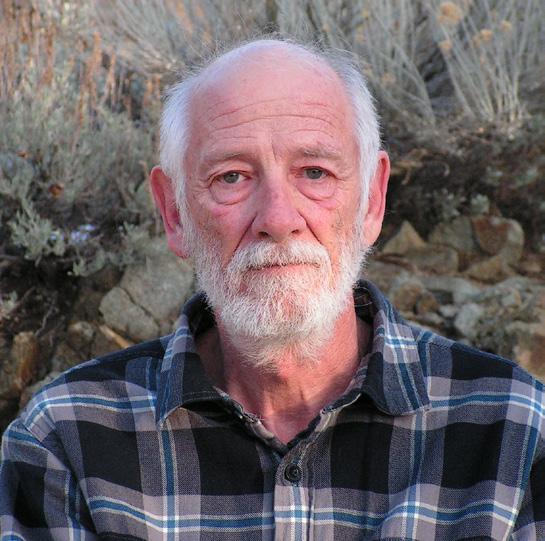
Biden’s age
FactCheck.org estimates that in 2018, when the Trump team enacted their policy of separating children from their families as a deterrent to asylum seekers, almost 400,000 people still crossed our southern border undocumented. Those people can’t be feeling very loyal to a country that could act so cruelly. The anger will be generational.
A compassionate solution may be more costly in the short term, but has both short and long-term potential for creating a robust next generation of defenders of our Constitution.
Treating migrants with basic human dignity is the minimum we should do, but if we manage them based on the American principles proudly displayed on our Statue of Liberty, where it says, “Give me your tired, your poor, your huddled masses yearning to breathe free,” our strength as a nation will grow.
Article 1 of our Constitution provides for a Congress where the union’s issues are solved peacefully based on cooperative compromise. Challenges related to migrants arriving at our borders are manageable, but require all hands on deck working together to get it right. Policy differences can only become a threat when one side or the other takes a “my way or the highway” attitude. Mob rule, on the other hand, such as what was attempted by the Jan.
STREETALK
What are you tired of?
Asked at Casale’s Halfway Club, 2501 E. Fourth St., Reno

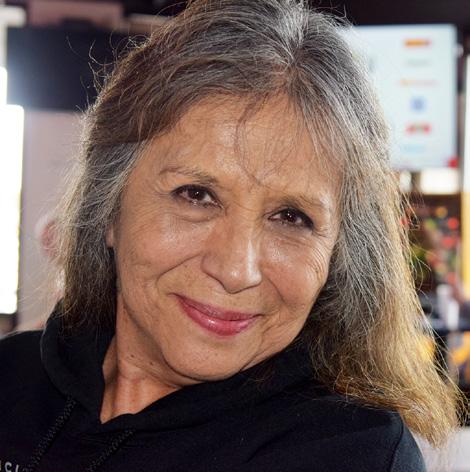
Article 2, Section 1 of our Constitution specifies a chain of succession should the president be unable to fulfill the duties of the office. This process for a peaceful transfer of power preserves the will of the people through their elected representatives, with all the safeguards of our Constitution still in play. Our Constitution sustains the republic. Mob rule is how republics are lost.
Some argue that Trump can’t be held responsible for inciting the Jan. 6 attack on our Capitol. Maybe, but no playing with words about First Amendment rights can cover for how he sat idly by while the mob attacked. With his inaction that day, he broke his oath to “protect and defend the Constitution,” and no amount of flag-hugging by Trump can erase that fact.
Our forefathers created our Constitution to sustain our republic through peaceful resolution of issues based on the will of the people loyal to the union. Patriotism based on blind loyalty to a person or party is the true existential threat to our republic.
Michel Rottmann is a retired engineer from Bently Nevada in Minden; a retired math professor from Western Nevada College and Truckee Meadows Community College; and a volunteer for KNVC, Carson City Community Radio. He lives in the Virginia City Highlands, supporting a rescue cat that seems to have many more than nine lives.
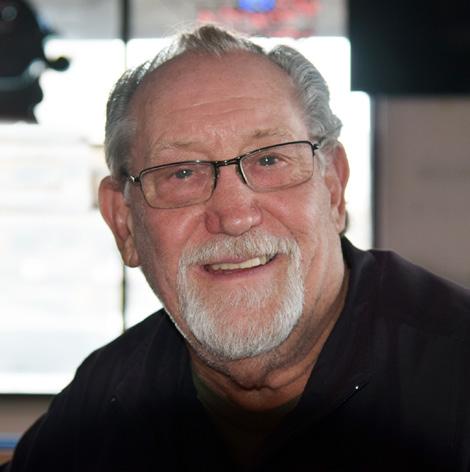

 BY DAVID ROBERT
BY DAVID ROBERT
Michael Karsten Delivery person
I’m tired of the government giving us a choice between two shitty candidates. We need someone who represents the best interests of the average American. I kind of liked Bernie Sanders when he was running, and I thought that Robert Kennedy would be a good choice for president. But the media has portrayed him as a kind of whack job.
Christine Miner Senior admin analyst
I moved here from Los Angeles three years ago. There are more and more people here. It’s become crowded. Buildings and apartments are going up everywhere. My friends wanted me to move here because it was less expensive and less crowded. I’m starting to feel a little bit like I’m back in L.A. Congestion on the roads in the last year has become crazy. I’m tired of it already.
Ron Peck Inspector
I’m sick and tired of politics. It doesn’t seem that the left or the right know what they’re doing. It’s very divisive. Can’t we all just get along and be one big happy family? There is too much prejudice. We need to treat people fairly and be nice to each other. White, black, brown, green or blue—it doesn’t matter. Be respectful of each other.
Billy Stephany Retired
I’m tired of all the changes. Everything is always changing, especially if you’ve lived in Reno for a long time. Downtown is especially changing. Harrah’s is gone. It was supposed to be made into a mall, shops and condos, and now the company just filed for bankruptcy. Fourth Street has also changed. There used to be all these friendly, small stores. This town has changed, and so have the people.
Kathleen Youmans Hostess
I’m tired of being tired. No matter what I do, I’m just tired. Things used to be easy, and now I have to save up all my energy for work. I rest up on my days off, and go to bed early, and that doesn’t even help that much. I used to be able to power my way through things, and now I have to put a lot of effort into it.
RenoNR.com | March 2024 | RN&R | 3
A NOTE FROM THE PUBLISHER
What happens when Christ is left out of Christianity
Growing up, I went through a sampler, of sorts, of Christianity.
I was baptized at Trinity Lutheran Church in Gardnerville. I went to the old Steamboat Baptist Church on Geiger Grade Road, and attended several Bible camps as a kid. I had a lot of Catholic friends—and even more friends who were LDS (aka members of the Church of Jesus Christ of Latter-day Saints, aka Mormons). I became a member of the LDS Church when I was 19, but left about six years later due to concerns I couldn’t shake over some elements of the church’s history, and the church’s treatment of LGBTQ individuals—particularly the members’ fervent support of ballot Question 2, which put a ban on same-sex marriage into the Nevada Constitution.
All of this left me with a religious dichotomy: I grew to dislike most religious institutions, for a whole lot of reasons—but I’ve always loved and tried to follow the teachings of Jesus Christ.
Jesus was a dude who didn’t look down on others. He encouraged everyone to love and help their neighbors. He taught values like kindness, forgiveness and fellowship.
One of those aforementioned reasons why
I grew to dislike most religious institutions was (and is) that I didn’t see a whole lot of Christ’s teachings in a lot of their actions.
This all was on my mind when I read a story about the uproar over the New York funeral of Cecilia Gentili, an activist and performer who died on Feb. 6 at the age of 52. I first heard of Gentili—an outspoken advocate for transgender people and sex workers— when she spoke at an event I attended last fall in Palm Springs.
Her funeral was held at St. Patrick’s Cathedral in New York. This is how The Washington Post described it:
The cheering began shortly after the priest opened the funeral.
Edward Dougherty, the priest presiding over the event at the Manhattan church. “Except on Easter Sunday, we don’t (usually) have a crowd that is this well turned out.”
As Dougherty chuckled into the mic, Gentili’s family, friends and a few celebrities applauded, with some chanting “Cecilia.” They were celebrating a woman who advocated for sex workers, immigrants and people living with HIV. The funeral was punctuated with cheers for a trans woman who exemplified their struggle for safety and acceptance, and speakers prayed for transgender rights and access to health care.

Bold-colored outfits dotted the hundreds of people in the pews of St. Patrick’s Cathedral for transgender advocate and avowed atheist Cecilia Gentili’s funeral Thursday.
“Welcome to St. Patrick’s Cathedral,” said
In the days following the funeral, the Roman Catholic Archdiocese of New York began to express disdain. What was so offensive, leading church officials—led by Enrique Salvo, the head of St. Patrick’s—to use terms like “scandalous,” “deceptive” and “sacrilegious”? From that aforementioned piece: New
| BY JIMMY BOEGLE

York Archdiocese spokesman Joseph Zwilling told The Washington Post that Salvo’s statement was about “the behavior of some of those in attendance at the funeral—including comments like ‘the mother of all whores’ or changing the words of the ‘Ave Maria,’ a sacred hymn, to ‘Ave Cecilia’ to cite just two examples.”
Gentili’s family issued a statement on social media pushing back against the archdiocese’s claims, responding that the funeral brought “precious life and radical joy to the Cathedral in historic defiance of the Church’s hypocrisy and anti-trans hatred.”
“Cecilia Gentili’s funeral … was a reflection of the love she had for her community and a testament to the impact of her tireless advocacy,” the statement said, later adding: “The only deception present at St Patrick’s Cathedral is that it claims to be a welcoming place for all.”
Nobody was harmed by anything done at Cecilia Gentili’s funeral. Nothing was damaged. While some offense could be understandable if the intent of the service was to demean or mock the Catholic Church, it appears the service was purely a celebration of Gentili’s life.
The only problem here is that uptight, privileged church leaders got offended—because they disregarded the teachings of Jesus himself.

4 | RN&R | March 2024 | RenoNR.com
ON NEVADA BUSINESS
Deal or no deal: Your preflight checklist for successful negotiations
This month, my buddy and colleague Chris Yount is taking the column.
He is an entrepreneur and mentor with me, helping startups, SMEs—that’s business lingo for “small to medium enterprises”— and especially university startups gain some perspective and hopefully some traction. He has expertise in many areas including manufacturing, leadership, turnarounds and strategy.
He’s also a columnist for Family Business Magazine. Chris has some great insights from selling a family business years ago. He’s great guy, and also a pretty darn good skier! Check it out. —Matt
Westfield
Whether you are involved in the business world or not, negotiations are all around you. Getting the landlord to fix the sink in your apartment, obtaining a raise at work, deciding what movie to stream with your significant other—these are all negotiations, even if you don’t think of them as such.
Chance favors the prepared. Negotiations are no different. A little work ahead of time will do wonders for your eventual outcome. I will walk you through a preflight checklist of things you should consider before you enter any negotiation.
Before we begin, a disclaimer/word of caution: Negotiating tactics are ripe with moral or ethical quandaries.
From not disclosing a material fact, to exaggerations, to white lies, to out-and-out fraud, there are many approaches that will push your principles. It is helpful to firmly consider where your line is—and never cross it. Where you position your line is a personal matter, and I am not advocating what is right for you, but don’t let the heat of the battle allow you to wander over your own line.
Know what you want
Science-fiction writer Arthur D. Hlavaty once said, “The first secret of getting what you want, is knowing what you want.” While it may sound basic, you would be surprised to find out how many people enter a negotiation without really examining what they want out of it.
Trying to get the cheapest price is not really a defensible position. What price is fair in your mind? What things can you do without? Are there terms of the negotiation you care the most about? What do you care the least about getting? By evaluating your needs versus your wants objectively beforehand, you are better able to steer the discussion toward your ultimate goal.
Know what they want
This is the flip side of the same coin. Just arguing vehemently for your position is fine, but you will be much more effective if you have really listened to understand the goals of your negotiating partner. It is surprising how often a true win-win solution can be achieved just by clearly understanding what is meaningful to the other party.
The threat and value of asymmetric information
“Asymmetric information” is when one party in a transaction has more information than the other. Both parties will typically have some pieces of information the other is lacking. You know the minimum salary you are willing to accept at a new job, but the hiring manager knows how much they pay others in this same position. Both sides are trying to uncover what they don’t know to improve their bargaining position.
To the best of your ability, understand what facts you know that the other side does not know. Will it help you or hurt you to make sure they are aware of this information? This is where some of the moral considerations mentioned earlier will come into play.
Try to get a feel for what information they have that you don’t have. Is there a way to get that information or validate it with a third party? To loosely quote Donald Rumsfeld, “There are known unknowns and unknown unknowns.” Try to decrease the unknowns so you can avoid unwanted surprises.
Care the least; get the most
Quite often, the party that is the least interested in the negotiation is in a superior bargaining position. The ability to walk away is one of the most powerful tools you can bring to bear in a negotiation. Of course, you don’t want to have your bluff called and ruin your chances at a great deal.
The best way to balance this threat is to first consider your BATNA (“best alternative to negotiated agreement”). If these talks break down, what alternatives would you pursue? By knowing your next-best alternative, you now know when this current deal is no longer the best fit for your needs.
Finite vs. infinite game
Lastly, you should consider the nature of this relationship. Is this a finite game, where you will never see this person again? Or is this an ongoing relationship where you will want other negotiations to go well in the future?
You often see travelers screaming loudly at airline personnel, with little concern about hurting their feelings. This is a finite game.
This traveler likely will never see this airline employee again, so they use tactics that can be very aggressive to get what they want in that moment.
If you are asking your boss for a raise, you are in an infinite game that will be played again and again. If you push too hard, your boss might not be open to giving you the time off you request later, or might withhold better assignments in the future. With infinite games, you need to consider what you want now, but also give thought to what you may want later in this relationship, too.
Putting it all together
Let’s go through the checklist for a fictional negotiation. In this scenario, let’s say you are shopping for a used car.
• Know what you want: Make a list of musthave features like all-wheel drive; nice-to-have features like a sunroof, maximum number of miles, how many seats, etc.; what you want to spend; and the maximum amount of money you can spend.
• Know what they want: The car dealership certainly wants to make a sale for the highest price possible, but there are other things they
may want, too. Are they interested in trade-ins, financing, servicing contracts, whether you are a repeat customer, etc.?
• Asymmetric information: Do as much research as possible about the models of car you are considering. Bring in Kelly Blue Book pricing and car-loan offers from a local credit union. Read about similar cars available from competing car dealers. Also think through what information you have that is worth disclosing, and what information you will keep to yourself. Disclosing whether you are a schoolteacher or CEO will likely be information that affects the negotiation process.
• Care the least: This is where your BATNA really comes in. Know what alternative cars you can buy, and really know where your line is.
• Finite or infinite game: This is likely a finite game, but you may ask about maintenance programs or other ways of extending the relationship for better terms.
Negotiations can have a bad reputation, but by approaching them methodically, you will be better prepared to get what you want— and help the other side achieve an excellent outcome as well. Win-wins are possible with a little preparation.

RenoNR.com | March 2024 | RN&R | 5 | BY CHRIS YOUNT
LEARN TO POLE DANCE! 1350 STARDUST ST. SUITE B ★ RENO Sign up at verticalbarrereno.com Pole fitness is a fun and sexy way to exercise For all sizes, genders, and ages 18+ No dance or fitness experience necessary

Nevada’s first psychedelic church
These spiritual leaders plan to offer psilocybin mushrooms for therapeutic use under the religious freedom act
A new church in Washoe County intends to offer psilocybin mushrooms to practicing members.
Founded by Pam Conboy and Dr. Leah Linder, the Setas Seminary Church of Spiritual Integration is described on its website as a “non-denominational, holistic church intent on elevating whole health and spiritual connection.”
Operating as a church incorporating elements of naturopathic medicine, holistic spirituality and the burgeoning field of psychedelic-assisted therapy, Setas Seminary plans to offer small amounts of psilocybin mushrooms under the protection of the Religious Freedom Restoration Act of 1993—a
Pam Conboy and Leah Linder are the founders of the Setas Seminary Church of Spiritual Integration. They plan to distribute microdoses of psychedelic mushrooms for therapeutic use as part of a suite of holistic health practices.
Photo/David Robert
psychedelic-assisted therapy coupled with other care protocols—make tremendous strides in a shorter amount of time compared to similar cases.
“It opened up this whole panacea of like, ‘Oh my gosh, we can actually create really profound change in a much shorter window that is prolonged,’” Linder said. “This is not just a Band-Aid. This is something that is getting at the root cause of why these people are having these physical symptoms that are associated with mental and emotional health.”
Linder’s observations are in line with a growing body of research demonstrating the potential of hallucinogens to “rewire” the brains of people who are suffering from conditions like substance-abuse disorders, treatment-resistant depression, alcoholism and PTSD.
In two decisions in 2018 and 2019, the U.S. Food and Drug Administration designated psilocybin as a “breakthrough therapy” for the treatment of PTSD and depression, allowing for more clinical studies of the compound’s effectiveness. The Department of Veterans Affairs has issued requests for applications of proposals to study the use of psychedelic compounds in treating PTSD in veteran populations—the first time the VA has shown interest in such studies since similar research was abandoned in the 1950s and ’60s.
After witnessing the healing potential of “entheogenic mushrooms” (“entheogenic” describes a psychoactive substance used in a spiritual context), Linder and Conboy both dove into the research behind psychedelic-assisted therapy, and even attended a psychedelic retreat in Mexico this past December to try mushrooms in a controlled environment.
Linder and Conboy declined to say where they get their mushrooms from—just that they are grown in highly controlled lab environments in either California or Nevada. Linder said that all of the mushrooms are tested for potency, toxins, heavy metals and other undesirable elements.
Through donations, practitioners can obtain a 60-day supply of microdosage psilocybin pills and an accompanying blend of organic supplements intended to promote overall health and enhance the mushrooms’ healing effects.
Linder and Conboy stress that the Setas Seminary approach is intended to be holistic, and members are encouraged to participate in supportive lifestyle practices like yoga, meditation, breathwork and fasting to achieve optimal results for their mental and physical well-being.
Legal questions remain
The text of the Religious Freedom Restoration Act states that the “government shall not substantially burden a person’s exercise of religion even if the burden results from a rule of general applicability.” Broadly applied, as long as the use of psychedelic substances constitutes an authentic expression of religion in an organized setting, the government cannot prevent it unless it can prove it has a “compelling governmental interest” in doing so.
Conboy and Linder said they received legal advice prior to setting up Setas Seminary and were assured that, as long as they were following all the rules of a formally established church, they and their practitioners would be protected from prosecution under the Controlled Substances Act—which currently lists psilocybin mushrooms under Schedule I, meaning the federal government recognizes no therapeutic use for the substance.
“We are very confident that we’re approaching this in the right way,” Conboy said. “We know for damn sure that people are protected under religious freedom, and that we just have to follow all the rules.”
law that, the church claims, allows for the sacramental use of hallucinogenic mushrooms, even though they’re currently under federal and state law.
Conboy and Linder met while working at the same nutritional-supplement manufacturer. Both women describe themselves as coming from a medical background—Conboy as a clinical laboratorian and medical marketer, and Linder as a naturopathic physician and nutritional-supplement formulator.
As part of her naturopathic practice, Linder shared with Conboy that she had patients who were privately experimenting with psilocybin mushrooms to treat stress and trauma. Linder claimed to have seen these patients—using
“It was really a big market-research journey for me,” Conboy said. “I came away a true believer.”
Conboy and Linder decided that a church could be a legal vehicle for providing people with the healing effects they had experienced themselves.
Mushrooms as sacrament
Linder is a master gardener and handles the sourcing of the mushrooms and their formulation into pills, which offer only a “microdose”—a dose large enough to encourage neurological activity, yet small enough to prevent users from experiencing visual hallucinations or impaired judgment.
Conboy and Linder have consulted with Sean McAllister, an attorney in Denver, who advertises his expertise in psychedelics law on his website. McAllister declined to comment for this story.
Conboy and Linder are also confident in what they see as a simple truth: No one is looking to prosecute anyone for medicinal uses of hallucinogenic mushrooms. They claim to know first responders and law-enforcement officers who are some of the biggest proponents for psychedelic-assisted therapy.
“I have everybody from Reno PD to the fire department and smoke jumpers to paramedics to ER doctors and nurses,” Linder said. “I have these patients who are actively coming to me to say, ‘I need some help. I have to deal with so much every single day, and I have to be the person that’s on point, and I’ve never been taught
6 | RN&R | March 2024 | RenoNR.com NEWS
BY
|
MATT BIEKER
how to actually manage that stress.’”
The RN&R’s calls to the Washoe County Sheriff’s Office requesting clarification on their stance about the prosecution policies around hallucinogenic mushrooms were unanswered.
The path to legalization
The formation of Setas Seminary comes at a time when the state’s relationship to the clinical and criminal aspects of psilocybin mushrooms are shifting.
In March 2023, lawmakers introduced Senate Bill 242, which initially would have essentially decriminalized the use, cultivation and possession of small amounts of psilocybin mushrooms, and established “procedures for a research facility to obtain approval ... to conduct certain studies” related to psilocybin.
SB 242 was eventually scaled back, meaning that mushrooms are still illegal in Nevada, but the bill passed in June with a directive to form a working group to study medicinal use.
“We’re in the process of trying to figure out what the regulatory structure could look like and how to potentially make psychedelic-assisted therapy affordable,” said Kate Cotter, president and executive director of the Sierra Psychedelic Society, a nonprofit advocacy group focused on community building and education around psychedelic medicine. “We’re learning everything that we can from Oregon and Colorado and the cities that decriminalized. For instance, Denver: The Denver report shows that there was no increase in crime or adverse events.”
Cotter said the working group hopes to have a full report ready for legislators during the 2025 session. In the meantime, local advocacy groups continue to lay the groundwork for eventual legalization through community education and outreach to push back against psilocybin’s stigma as a counter-culture street drug—especially with law enforcement.
“When you ask (law enforcement) about, for example, psilocybin, they have the concern that it could be a gateway drug, and they say that without completely understanding the full background of what the medicines can do,” said
Jon Dalton, a retired Navy SEAL and president of the Nevada Coalition for Psychedelic Medicines, a sister organization of the Sierra Psychedelic Society. “What may happen is they may roll up a dealer, and that dealer might have meth and fentanyl and coke, and he’ll have some psilocybin. So that gets kind of rolled into the take. … But for the most part, when you talk to law enforcement, they’re like, ‘This is not on our priority (list) of things to go after; we have much, much bigger fish to fry.’”
In their dealings with local government and law enforcement, Cotter and Dalton report experiencing a similar attitude as Linder and Conboy: The anecdotal and clinical research behind psychedelic therapy is compelling enough to warrant serious consideration, as long as it isn’t bringing undue harm to the community.
Cotter and Dalton are clear that neither they nor their organizations are involved with Setas Seminary, and they don’t know enough about the “church model” to speak to its effectiveness and legality. However, Cotter said she is looking forward to learning more about how the church operates.
“If this is within the boundaries of the law, which it sounds like it may be, and there’s the proper setting, and there’s the proper dosage and all these things that are required to make the powerful medicines safe and effective, then having more people understand psychedelic medicine and understand the values of the benefits and the healing properties, I think that’s a good thing,” Dalton said.
On Saturday, March 23, Setas Seminary will host a Spring Equinox Celebration at the Ranch House at Rancho San Rafael Regional Park, 1595 N. Sierra St., in Reno. The event is a formal launch for the church and will feature wellness activities such as breathwork and meditation, as well as a silent auction. People can attend one of two two-hour sessions, from 1-3 p.m. or 3-5 p.m.; registration is required, and psilocybin will not be distributed at the event. Learn more at setas.maslowmade.com/events.

‘Not for sale’

“Jíbaro Soy” is a 20-foot-high sculpture by Puerto Rican artist Mark Rivera that debuted at Burning Man in 2023. It was reassembled at the Generator in Sparks after sitting in storage for a few months.
The figure depicts a farmer whose chest, protected by two 200-pound machetes, houses a tightly packed neighborhood of wooden houses with signs saying “no se vende” (“not for sale”).
“I just wanted to … create a sculpture that would show the world who I am, where I come from, and also talk a little bit about Puerto Rico, so that maybe I can express to other people around the world what our culture is about,” Rivera told Burning Man organizers.
Plans are in motion to install the sculpture on the Neon Line on West Fourth Street in Reno, near the J Resort.
—Kris Vagner
RenoNR.com | March 2024 | RN&R | 7
In recent years, the FDA has designated psilocybin as a “breakthrough therapy” for the treatment of PTSD and depression, allowing for more clinical studies of the compound’s effectiveness.




8 | RN&R | March 2024 | RenoNR.com GET INVOLVED. CORNELWEST2024.COM Paid for by Ann Cascarano April 13, 2024 at 8 p.m. & April 14, 2024 at 2 p.m.
A.V.A. Ballet Theatre and the Reno Phil
Pioneer Center for the Performing Arts PioneerCenter.com
Artistic Director Alexander Van Alstyne - Conductor Laura Jackson
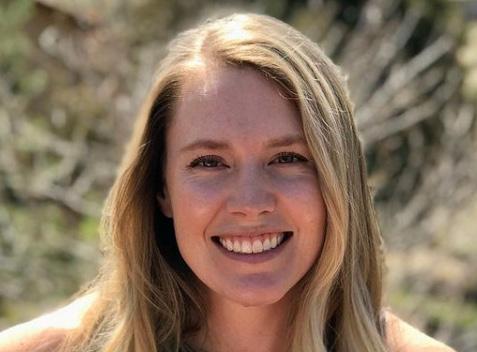

‘A crisis for our democracy’
Why Nevada’s voter-registrar turnover rates are such a big problem
In a public comment to the Washoe County Commission in January, Jennifer Willett— senior grassroots manager for All Voting Is Local, a group that aims to protect voting access—stated that “turnover rates (of top election officials) should be recognized as a potential crisis for our democracy, especially as election officials have cited harassment, death threats, lack of trust from voters due to election conspiracies, burn out and more.”
Her comments came after then-Washoe County Registrar of Voters Jamie Rodriguez resigned in January without stating the reason. Her predecessor, Deanna Spikula, had resigned in July 2022 due to intense harassment.
The Reno News & Review spoke to Willett and All Voting Is Local Nevada state director Kerry Durmick about the reasons for the turnover of election officials—and what this trend means for Nevada.
How are the turnover rates of top election officials in our state a potential crisis for our democracy?
Willett: I think that especially in our state, (facilitating) democracy and voting is an increasingly complex job. Just this year, we have three elections, and we have three different ways you can vote: by early vote, by mail and on Election Day. When people turn over, of course, there’s a brain drain, but that’s really concerning in a highly technical job like this.
When you say “brain drain,” what do you mean?
Willett: If a registrar or clerk has been
Jennifer Willett and Kerry Durmick, of All Voting Is Local, are speaking out about the dangers of election-official turnover.
hand count, and she does not want to. They’re making threatening remarks about cutting her budget if she doesn’t do it.
Can you speak to what the goal of these “conspiracy theorists” might be?
Durmick: In Washoe County, and particularly in places like Nye County, they’re pushing hand counting, which we as an organization fundamentally disagree with.
What is so bad about hand counting?
Durmick: It’s much less cost-effective. You have to get way more poll workers and volunteers in order to hand count. It is an extremely bad process for the safety of ballots. Voters are forced to use a paper ballot instead of having the option of going to a ballot machine. So it really is taking away access from voters who live in rural Nevada.
there for 30 years, they know so much that they don’t even know how to write it all down. It’s all of their experience combined. So when somebody resigns or retires after 30 years, like (former County Clerk Kristine Jakeman, after being in the job for 22 years) in Elko, they take a lot of that knowledge with them.
Durmick: From a statewide perspective, I think the bigger issue in some of our rural communities is the pressure the boards of commissioners are putting on these county clerks. The clerks are not always resigning because of threats. Most of the time in the rural counties, it’s because the boards of commissioners have put unnecessary pressure on them to do things that could create a crisis situation in their county.
To be as positive as possible, we don’t have a single county (in Nevada) that does not have a county clerk in the role right now. That’s really significant, because a lot of states can’t say that. We’ve seen deputies step up, and they’re now serving as the clerk or the registrar in those counties.
Can you give an overview of what is happening right now regarding the turnover of voter registrars and county clerks?
Durmick: Since 2020, we’ve had over 50 percent of registrars or county clerks (in Nevada) retire or resign for various reasons. My concern with Washoe is that we have a group of conspiracy theorists that is putting a lot of pressure on whoever is sitting in that registrar of voters role and creating an unsafe situation for them at times. Like we’ve seen in the past, Deanna (Spikula) resigned over threats. … In Esmeralda County right now, the Board of Commissioners is pushing County Clerk (LaCinda Elgan) to
Willett: Broader research on this shows that (hand counting) is not as accurate as when you count with machines. People make mistakes.
Do you think the push for hand counting in Nevada is tied to the accusations of election fraud that fueled the Jan. 6, 2021, attack on the U.S. Capitol?
Durmick: I do think it is tied to the conspiracy theory of voter frauds and the effects of (the 2020 presidential election). Washoe actually kicked us off in 2021 with anti-voter resolutions, and those were voted down, luckily, but a lot of them were illegal, federally and statewide anyway. Lander started discussing the conspiracy theory of the Dominion machines and switched over from Dominion to ES&S (Election Systems & Software). And then (calls to hand count) moved to Nye and Esmerelda. Elko discussed (hand counting) in 2021 and 2022, but it was never implemented.
When you say anti-voter resolutions, what do you mean?
Durmick: In Washoe, they were attempting to have the National Guard at every polling place, paper ballots, hand counting, limited machines, (and to make it so) the county would be able to cancel voter registrations for various reasons that are illegal. And (Washoe County Commission Vice Chair_ Jeanne Herman has talked about bringing those resolutions back on the Washoe County Commission Board.
Willett: Commissioner Herman brings (these resolutions) forward to be voted on again periodically. She proposed bringing it back up fairly recently, only a few months ago, but it didn’t end up making it onto the agenda. These proposed changes would definitely make it
| BY DELANEY URONEN
harder for people to vote, make the count less accurate, and it would take a lot longer and take a lot of our resources.
Just how large of a role are county commissions playing in these issues in Nevada right now?
Durmick: County commissions are really what I’m seeing as the issue behind this. Esmerelda hand counted in 2020 because of pressure from the county commission.
And then the Nye County Commission pressured their former County Clerk (Sam Merlino), and she resigned. Then Mark Kampf was appointed, and so that’s why there was a hand counting process.
Willett: In the Washoe County Commission, the anti-voter resolutions are coming up repeatedly. And we have two county commissioners (Herman and Michael Clark) who, frankly, support a lot of these resolutions that would make it harder to vote, but there are three commissioners who generally support the registrar, as well as other people, like the district attorney. They can work out the legal aspects as a protective factor so they’re not forcing the registrar into making these difficult decisions or doing things that they know would make it harder for people (to vote). So having a supportive majority on a county commission is also really, really important for them.
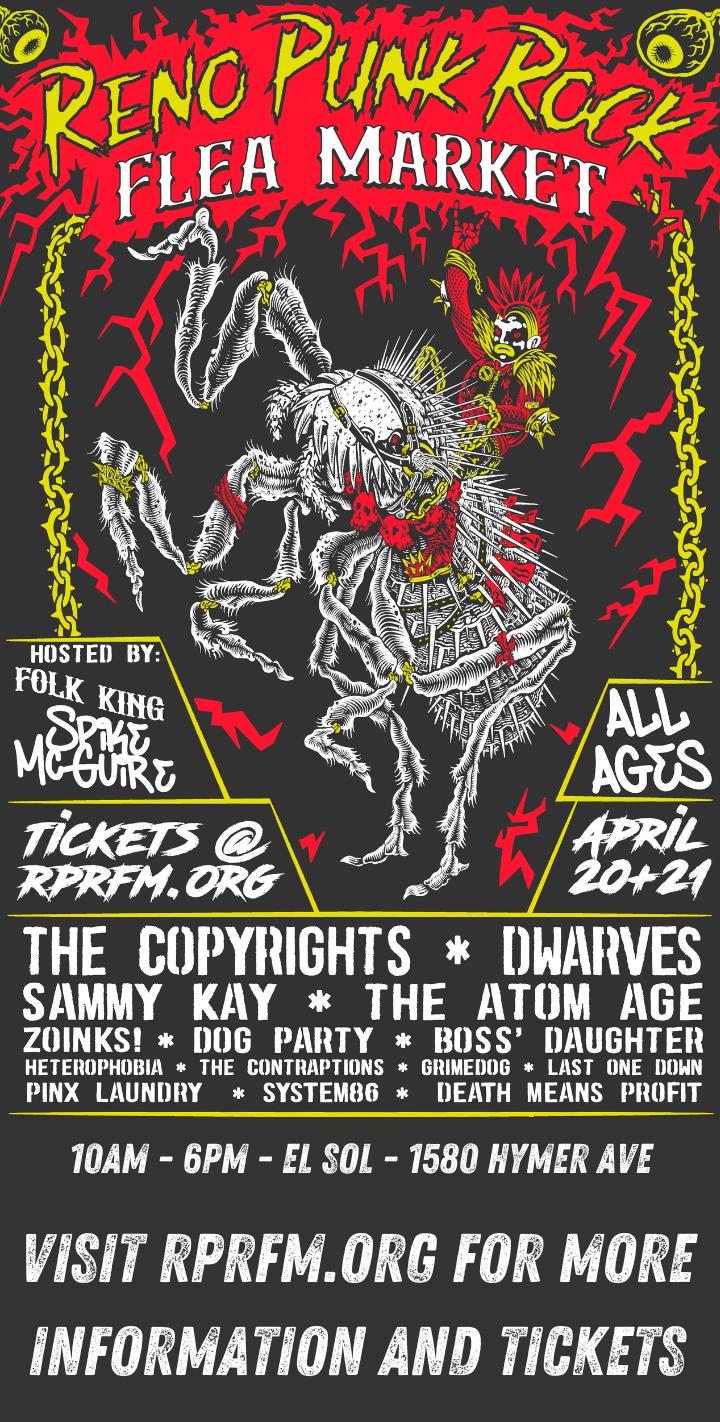
RenoNR.com | March 2024 | RN&R | 9 NEWS

Reusables trending
A growing number of Nevada purveyors are taking steps to reduce food-packaging waste
Do you wince when you toss those empty plastic shampoo bottles again? Cringe as you crush yet another Styrofoam to-go container into your already-full trash can? Well, thanks to various environmental groups, restaurants and businesses in Northern Nevada who supply reusable alternatives, it’s getting easier to ditch single-use plastic, paper and Styrofoam products.
In September 2023, Coffeebar expanded its partnership with Okapi Reusables to the Reno/Tahoe locations, making them the first in the area to use the Okapi network. Coffeebar’s Bay Area locations had already been using the program—a borrow-and-return reusable-cup service that features insulated stainless-steel cups made for hot or cold beverages. Using the Okapi app, users pay a one-time fee of $10 to borrow up to two cups at a time. Users have two weeks to return their cups to any of the 50-plus cafés participating in the program.
Olivia Tull, senior marketing manager at Coffeebar, said the program is going well.
“Overall, we’ve seen an aggregate upward trend of borrowing across all of our cafés,” Tull said. “Our biggest borrowers are still in the Bay … but our next biggest are actually our McCarran and Mt. Rose locations.”
Tull noted that in December, Coffeebar hit 1,000 Okapi cup borrows across all of its locations. According to Okapi co-founder Emily Chueh, participation at Reno’s Coffeebar locations has saved about 650 disposable cups from the landfill so far.
Other area restaurants have been taking
Students at the University of Nevada, Reno, can opt to pay a deposit to use an Ozzi container, and exchange it for a fresh one on their next visit to the Pack Place dining hall. Photo/courtesy of Nevada Dining
nitely a little bit more environmentally friendly and cautious,” Flores said about the program’s popularity.
Household products on tap
Other businesses in Reno continue to offer reusable options.
The Waste Less Shop opened in 2021 and offers 50 bulk products that range from household goods to bath and beauty products. The shop sells reusable containers and dispenses 10 liquid products—including dish soap, hand soap, shampoo and conditioner—through a tap system.
“We have a growing customer base,” said owner Stephanie Cochrane told the RN&R “Once they start refilling those essentials, we have a 75 percent return-customer rate.”
similar approaches. Through the Green Box To-Go program from greenUP!, an environmental nonprofit formed in 2008, nine restaurants in Northern Nevada have offered access to the reusable takeout-container program since the spring of 2022. Customers may borrow reusable containers—paying a one-time membership fee of $20 to borrow two containers at a time, or $40 for four containers—and return them within two weeks to avoid being charged a replacement fee. While greenUP! is working on finalizing an app for the Green Box To-Go program, you can enroll online through their website.
Carson City restaurants participating in greenUP!’s Green Box To-Go program include Squeeze In, Great Basin Brewing Company, Scoups Ice Cream and Soup Bar, So Juicy Juice and Salad Bar, and Juan’s Mexican Grill’s Carson Street location. Squeeze In’s locations in Northwest Reno and Sparks are also participants, and Laughing Planet’s two locations just started as well. Donna Walden of greenUP! said she expects the program’s reach will expand further into Reno and Las Vegas in 2024.
Since the spring of 2023, Nevada Dining at the University of Nevada, Reno, has utilized a system of reusable Ozzi containers. They’re available at Pack Place for a one-time deposit. Students can take food to-go in a reusable container and exchange it for a fresh one when done.
According to Regina Flores, communications specialist at Nevada Dining, the measure has been popular. “There have been 4,150 Ozzi boxes used since the launch of the program,” she said in an email to the RN&R. “For context, there are 2,594 students that have a meal plan.
“The newer generation on campus is defi-
In 2023, Cochrane said, the store served almost 9,000 customers, adding that the store has sold 52,000 laundry loads worth of detergent in reusable packaging.
Elsewhere, refill options have not caught on so quickly. According to staff at the Great Basin Community Food Co-op in Reno, relatively few people take advantage of their bulk offerings intended to go in reusable containers, which include solid and liquid food and non-food items. When they do, nuts, seeds, granola and flour are the most popular.
Forecasting the future of reusables
Where will this trajectory carry the trend of reusables in Nevada? Lakshmi Albright, co-founder of Reusable Reno, a volunteer coalition committed to raising awareness about single-use plastic waste, told the RN&R she is “cautiously hopeful.”
Albright said she is especially encouraged by the appointment of Washoe County sustainability manager Brian Beffort.
In a world plagued by enormous environmental problems, a switch to reusable containers may seem awfully small. But according to the Reusable Packaging Association, switching to reusables from single-use plastics could reduce greenhouse gas emissions by up to 60 percent. It also has the potential to dramatically reduce water and energy consumption, as well as the amount of solid waste in landfills.
Albright said that the local chapter of the Sierra Club (of which she is a member) has met with lawmakers to seek action during next year’s legislative session. The club would like a law requiring restaurants to wait for customers to ask for plastic utensils, instead of including
| BY DELANEY URONEN
them in to-go orders automatically. They would also like delivery apps like DoorDash to include an option asking customers whether they need to-go utensils. “Everybody loves it, but we haven’t found a champion yet,” said Albright. “In Nevada, there’s a lot of verbal interest, but there isn’t a lot of effort going on at the legislative level to enact any actual ordinance for reusables, and there aren’t citizens pushing for it.”
The story has been different in California. The city of Oakland passed an ordinance on Dec. 19 that requires prepared food and beverage vendors to supply reusable food ware to customers who dine in; allow customers to use their own reusable containers to take food to-go; and only provide single-use utensils or other food ware upon request.
In 2019, Berkeley became the first city in California to pass a law that requires businesses offering on-site dining to provide only reusable food ware. The law mandates a 25-cent charge for all disposable cups.
Effective Jan. 1, the town of Truckee requires all food vendors to charge 25 cents for each disposable cup and container used for to-go orders, and encourages patrons to utilize the town’s own reusable green-box program. Participants in the program pay $5 for a reusable to-go container, and can exchange it for a clean one for free at any participating restaurant.
Some measures meant to decrease waste, however, don’t work. In February, the Los Angeles Times reported that in the decade since California became the first state in the U.S. to ban single-use plastic bags, the volume of plastic-bag waste actually increased—because the law allowed heavier plastic bags, which technically meet definition of “reusable” (but are rarely actually reused), to be sold for 10 cents each.

Last September, Coffeebar became the first local business to start offering borrow-andreturn Okapi stainless steel cups. Using an app, customers pay a one-time, $10 fee to borrow up to two cups at a time.
Photo/David Robert
10 | RN&R | March 2024 | RenoNR.com NEWS

On the trail of ‘Snowshoe’ Thompson
Endurance runners trace the 1856 route of the pioneer mailman of the Sierra
The story of John “Snowshoe” Thompson, the intrepid mailman of the Sierra Nevada, has the feel of an American myth—as fictional as tales of Paul Bunyan or John Henry.
But Thompson—who hiked and skied across snowbound mountain ranges for 20 years in the late 1800s to deliver mail across a 90-mile route between Placerville, Calif., and Genoa, Nev.—was a flesh-and-blood hero. Without maps or compass, the lone traveler regularly navigated the peaks and valleys of the backcountry on skinny wooden skis while carrying a 60-pound pack full of mail, newspapers, magazines and small parcels.
“What an incredible endurance athlete this guy was,” said Bob Crowley, co-founder of History Expeditions. “Thompson typically made it to Genoa in three days, and it only took him two days going back to Placerville. Even by today’s standards, that is an impressive endurance feat.”
Crowley and Tim Twietmeyer, both extreme athletes, started History Expeditions in 2020 as a way to bring their two passions together: trail running and history. They have researched several early Western trails in search of fresh discoveries and to
Elke Reimer, Hal Hall, Tim Twietmeyer, Bob Crowley and Jennifer Hemmen make up the “Snowshoe” Thompson expedition team, which is slated to retrace the steps of the legendary “Snowshoe” Thompson. Photo/ Keith Sutter
more of the route today will be free of snow.”
Even when Thompson did it, according to the group’s research, he often had to put his skis over his shoulder and traverse rocky ground bare of snow, or slog over muddy hillsides.
“Everyone thinks of him on these 13-foot skis, skiing away from Placerville and three days later, skiing into Genoa,” Crowley said. “That’s a myth. He was hiking when he left Placerville.” When Thompson reached the snowline at what is now Kyburz, Calif., “that’s when he put on the skis and skied to Genoa.”
honor the people who blazed those paths more than a century ago. In March, the pair and their teammates Elke Reimer, Jennifer Hemmen and Hal Hall plan to follow what they believe is Snowshoe Thompson’s original 1856 route across the mountains.
From 1856 to 1876, Thompson traveled over snowdrifts up to 50 feet high and battled through blizzards with up to 80 mph winds to deliver mail to those living in isolation. He was the sole link between California, Nevada and the rest of the nation during the long winter months.
Others had tried to cross the high country on woven Canadian or Native American snowshoes but failed, or took weeks to complete the journey. In 1855, Thompson, a California rancher, saw a newspaper ad that announced, “People Lost to the World; Uncle Sam Needs a Mail Carrier,” and took the job. He carved long skis like those used in his native Norway and carried a single wooden pole for balance and steering.
Crowley said he and his team believe they have identified Thompson’s inaugural 1856 route and will trace it between March 6-10.
“It’s not a re-enactment; it’s more of a reprise,” Crowley said. “We’ll be in modern clothes and have modern gear with us. Because of climate change since the late 1800s, a lot
The trek is the group’s fourth expedition. In 2020, a History Expedition team traced the 1846-1847 route of the Forlorn Hope, followed by 15 members of the doomed Donner Party who made a break for safety while their comrades were stranded in the Sierra Nevada during the terrible winter. In 2021, they followed the path of Donner Party rescuers who reached the entrapped pioneers, and last year, the extreme athletes reprised the route of the Grosh brothers, who discovered silver in the Virginia City area in 1857 and made a winter trek across the mountains to get ore samples to California. In addition to identifying long-lost trails, team members have unearthed new information about historical figures and discovered at least one forgotten campsite. While trying to pinpoint one of the Forlorn Hope’s camps, the team found an ax head—presumably the one reported lost by Donner Party members in 1847. That find was documented last year on the Discovery Channel program Expedition Unknown
Following history’s clues
Researching Thompson’s route, Crowley said, was similar to figuring out the path of the Forlorn Hope party.
“We used the same methodology,” he said. “(The Forlorn Hope members) weren’t able to tell anyone where they went; all they could do was describe features or guess where they were, even what day it was.” The researchers had to rely on clues, such as what survivors or rescuers later said about terrain or topographic features, and those hints were pieced together to identify their route.
In Thompson’s case, the clues were found in his writings or those of his contemporaries. “He took multiple routes from Placerville to Genoa and back, delivering mail to many communities,” Crowley said. “We wanted to know about the first trip; we studied and became students of this one route.”
The team plans to take five days to complete
| BY FRANK X. MULLEN
the trek and camp for four nights, to allow time for the athletes to reflect on each day’s travel and experiences. They will have modern backpacks, tents and sleeping bags, unlike Thompson, who didn’t even carry a blanket.
“He carried the mail in a big bag with two straps,” said Frank Tortorich, author of John A. “Snowshoe” Thompson, Pioneer Mail Carrier of the Sierra. “It was a very crude backpack. It had to be very painful to wear.”
The federal government never compensated Thompson for his mail deliveries, because officials had already paid the primary contractor who hired him, but the money never trickled down to the man doing the most dangerous work. Thompson’s ranch and other enterprises were successful, Tortorich noted, “so I don’t think money was a problem.”
On two occasions, Thompson rescued stranded travelers and took them to safety by having them ride behind him on his long oak skis. He survived the first battle of Pyramid Lake in 1860 and once faced down a pack of wolves when he surprised the predators as they feasted on a fresh kill.
Thompson persevered without pay, winter after winter, Tortorich said, because he “was very civic-minded, and he could do something no one else could do. He knew the people in Genoa needed that contact with the outside world, and he could provide that.”
In Genoa today, a bronze statue of the Sierra mailman on his skis commemorates his life and his feats. On Sunday, March 10, the five modern trekkers are scheduled to arrive at the base of that monument and then present a talk at the Genoa Town Hall at 1 p.m. Starting on Wednesday, March 6, History Expeditions will provide an online tracker that will allow users to follow the team’s progress in real time. More information about the expedition can be found on the group’s web page and its Facebooka link.
For the extreme athletes, the research—and challenge of following forgotten trails—is its own reward. Crowley said once they start looking into historical events, they always find that one story leads to another, and the lives of the protagonists are interlaced. History unfolds.
“It’s been so gosh darn inspiring, so much fun,” Crowley said. “There are so many stories that are buried. Snowshoe Thompson sits in the shadow of history. The Gold Rush, the silver rush to Washoe and then the coming of the railroad are the big events, and the stories between those kind of got crushed between them.
“It’s fun to research among books and documents and on the ground,” he said. “And then we travel those routes. We’re really into the sport and endurance side, but we’re really into the history side, too. We are amateurs, but we go to the experts. It’s always a compelling human story. I’ve had my emotions surface more times in the last four years than in decades of endurance runs.”
RenoNR.com | March 2024 | RN&R | 11 NEWS
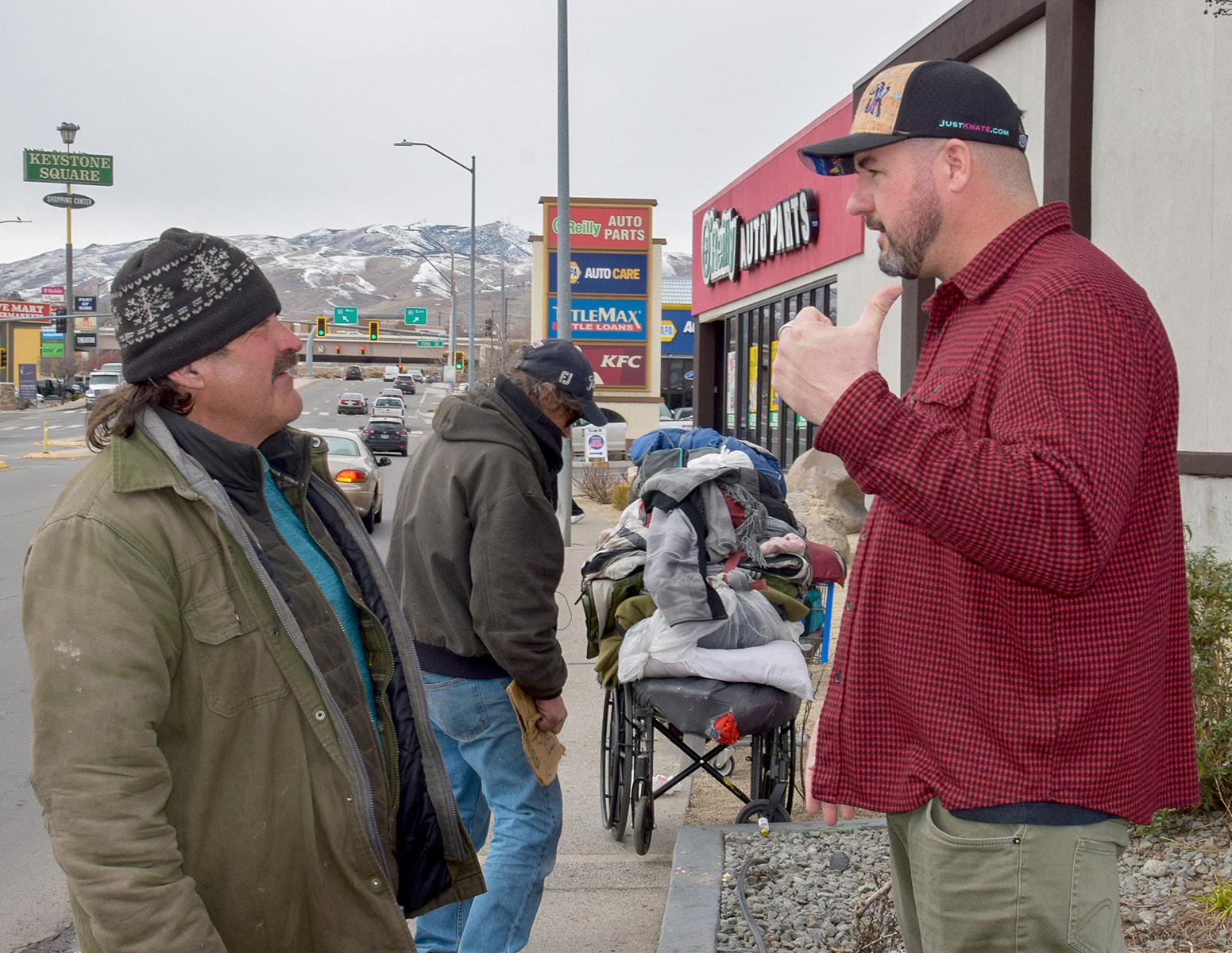
Sleeping bag? Socks?
Cheeseburger?
A Reno social media influencer uses income streams from his content to buy unhoused people whatever they need
A man in a hoodie with a salt-and-pepper beard asks random people living outside in Northern Nevada: “What would you do if you had a few hundred dollars right now?”
The man goes by “Just Knate.” (In third or fourth grade, there were too many Nates in his class, so he added a silent “K.”)
Nine times out of 10, it’s simple things:
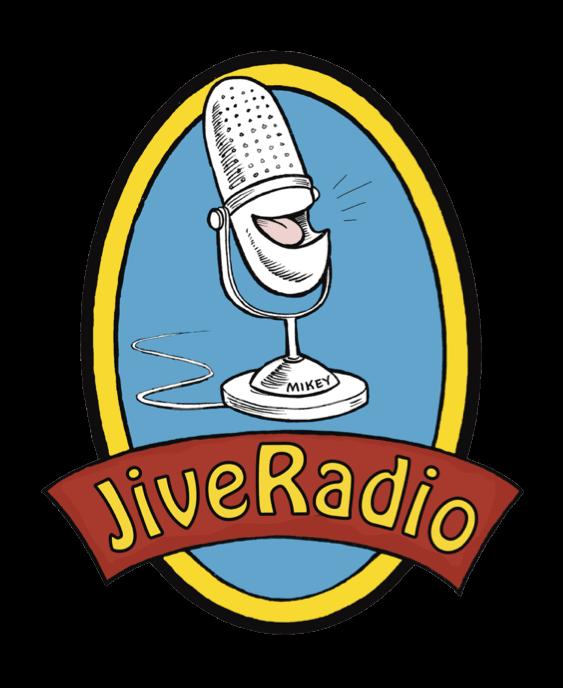
socks, a hat, shoes, a blanket, a cheeseburger, a phone—“things that make them feel the way they used to.” Sometimes it’s pet food for their support animal, or a hotel room for a night. It’s all pretty basic and immediate—just what they need right now.
He videos the entire encounter, from the initial sighting through completion, and posts
Bruce Van Dyke Radio
6-10am daily: BVD in Xville
His full morning shows on KTHX-FM circa 1993-96
Andy Miele, who has been without stable housing for five years, and Jason Freestone, who hasn’t had housing for 10 1/2 years, talk with Knate on Keystone Avenue.
Photo/David Robert
it on TikTok, Instagram, Facebook, YouTube and Patreon. If someone doesn’t want to be photographed, he puts away his chest-mounted body-camera and still gives the help. He explains to them, though, that it’s the video that gets the exposure to raise more funds so he can continue his mission of compassion and hope: The greater the exposure, the wider the reach, the more money comes in, and the more homeless people he can help. They then often agree to be filmed.
In the less than two years he’s been doing this, Knate has amassed nearly 5 million followers on social media. Many viewers donate; others are inspired to help someone themselves.
Recovering from hard times
Knate wasn’t always in such a good place.
“I was doing a lot of dumb stuff, and I had my own issues with addiction,” he said. “My little dog, Scruffy, was crucial to my recovery. I had someone else to take care of; I had to get myself together.”
He started riding his bike again. A month sober, he broke his ankle riding in the hills. A disabled homeless man, walking with a makeshift crutch, came out of nowhere and helped Knate to his feet. He let Knate use his crutch until he could get back on his bike and coast downhill.
“He made a big impression on me,” Knate said.
In 2018, he came to Reno to take a position as supervisor in a licensed cannabis cultivation facility owned by a friend. Six months later, he lost both the job and the friend. Unemployed and nearly broke, he spied a man on the curb holding up a cardboard sign. Man, he thought, if I’m not careful, I could be that guy. … That guy could have a similar story to mine. That was his epiphany, and life hasn’t been the same since.
In 2020, the COVID-19 pandemic came along. A lot of people faced hard times.
“Everybody has two to five to 10 dominos, and if all those dominos go down, all at once, they could be outside,” he said. “They could lose everything.”
Knate wants to help them get back on their feet. “They’re only a couple of steps away from getting back on track,” he said.
Building a brand
"Alexa,
bruce van dyke radio"
can’t get an ID without an address.
“It’s not easy to just go and get an ID,” Knate said. “Plus it costs $20. Homeless people get a discount, but some don’t want to be labeled ‘homeless’ in the system.”
That’s where the idea for the company came from. It’s also called “Just Knate,” and Knate describes the goal as “relief, not profit.” Using the BOGO (buy-one-give-one) model, he sells branded hats, socks and blankets, with more coming soon. Supporters can buy one item for themselves and donate a second to an unhoused person at no extra charge. Many donate both items.
Knate’s vision is to one day hire people who are unhoused and provide, as part of the job, an address, a shower facility, clean clothes, help getting an ID and/or Social Security number, and a safe storage space.
Just Knate’s Amazon wish list offers yet another way to help. It currently lists sleeping bags, and Knate and his girlfriend, Litcia, plan to add additional items such as sweatsuits, bags of dogfood, menstrual products and backpacks with a complete toiletry kit—including underwear, socks, T-shirts, a hairbrush, a comb, a razor, a blanket, a flashlight and a first aid kit.
Items from the Amazon list are shipped straight to Knate in Reno. He loads them into his car and goes out to find people who need them. Occasionally, he does a large giveaway: He takes 100 of every item and does a pop-up event at a local park, the location of which is announced on fliers in neighborhoods with high rates of homelessness on the day of the event. Cory White joins him with his food truck, Northern Envy, and feeds everyone.
When asked about his job title, Knate said: “I don’t like the term ‘influencer’ because of all the so-called ‘influencers’ dancing on camera and whatever. However, I am influencing people—in a good way. People tell me that, and I see the feedback, so I guess that’s probably the right term.”
And his income?
“I make money from ad revenue,” he said. “I get a certain amount per view on every video, if it’s watched the entire length. That’s considered ‘retention.’ The better retention a video has, the more it gets pushed out, and the more views it gets. … Eventually, the more ads that are seen, the more revenue comes in. So that’s how I pay my bills. That’s how I survive.”
He noted that every cent donated, and all of the proceeds from purchases made on JustKnate.com, directly support the mission to aid the homeless community.
Knate is currently kind of a one-man-band, providing short-term relief. But his vision is greater: He is building a business to help people find housing. He says he’s tried to find unhoused people jobs, but it’s virtually impossible for someone who doesn’t have an address or ID. You can’t get an address without an ID, and you
Knate is a problem-solver. Years after his epiphany, he is still working on solutions—and he hasn’t forgotten his little dog, Scruffy, or the man with a makeshift crutch. He said that people see him as some kind of saint, but he’s quick to correct that notion.
“I’m not perfect,” he said. “I make mistakes. … You don’t need to be perfect to do good.”
12 | RN&R | March 2024 | RenoNR.com NEWS
| BY CAROL PURROY
.org/bvd
jiveradio
play:
10a-6a: BVD's 4000 handpicked-for-Jive tunes from Shpongle to James Brown with vintage Bruce voice breaks from Xville at the top of every hour.
Planets and Bright Stars in Evening Mid-Twilight
For March, 2024
This sky chart is drawn for latitude 40 degrees north, but may be used in continental U.S. and southern Canada.
March’s evening sky chart.
Illustration/Robert D. Miller
the eastern horizon, by noting which side of the moon is illuminated. On March 4, the 40% crescent moon is at its southernmost position for this orbit, near the spout of the Teapot of Sagittarius, the Archer. On the next morning, the moon is still pretty far south, near a second-magnitude star in the Teapot’s handle.
On March 7, Venus appears 17° to the lower left of the 12% crescent. Mars is within 7° to the upper right of Venus and 11° to the left of the moon. On March 8, the 5% old crescent moon is 5° to the lower right of Venus and 6° to the lower left of Mars. Very low in bright twilight, the old moon will be quite a challenge to find.
The new moon occurs on Sunday morning, March 10, as daylight saving time begins. Just a few hours earlier, the moon passes perigee, the closest for the entire year. This makes the moon climb quickly into the evening sky; it’s possible, if you have an unobstructed horizon and very clear skies, to catch a very thin 1% crescent moon just above the western horizon, within 2° to the lower left of Mercury. Start 20-25 minutes after sunset, and look for Mercury 41° to the lower right of Jupiter. Binoculars will help.
March skies
Coming attractions include two eclipses—and the first appearance of a particular comet in 71 years
From the morning of March 1 until the evening of April 10, we’ll follow the moon as it moves eastward through the zodiac, passing the sun and all the other planets of our solar system—plus five first-magnitude stars, some more than once, as our natural satellite makes more than 1 1/2 trips around its orbit. Many of the moon’s encounters with other bright objects will be quite close and pleasing to the eye.
There are also two eclipses within that period. The first occurs just after midnight on the night of March 24-25, when the moon is almost 180° from the sun and passes through the Earth’s slightly dusky outermost shadow, or penumbra, passing north (above the umbra), missing the dark shadow core. The second eclipse occurs on Monday, April 8, when the moon completely covers the sun in a narrow track across North America;
here, we get to see a partial solar eclipse.
On the morning of March 1, an hour before sunup, we find the waning gibbous moon (70%) in the constellation Libra, about 4° from third-magnitude star Zubenelgenubi, which marks the southern claw of the older version of the Scorpion. As the morning sky brightens, look for bright Venus very low in the east-southeast, with faint Mars within 4° to its upper right. Each morning at the same stage of twilight, Venus gets a little lower, and Mars a little higher. Binoculars will help you see Mars. By March 31, they’ll be 18° apart.
On the morning of March 2, the moon is just west of the Scorpion’s head, and on March 3, the moon appears within 3° east of Antares, the red supergiant star marking the heart of the Scorpion. The moon is now at last quarter phase, when it’s half full and 90° west of the sun. You can tell where the sun is located, below
This young moon marks the start of Ramadan. During evenings this time of year, the zodiacal pathway makes a steep angle with the horizon, so the waxing moon climbs rapidly from one evening to the next. By March 13, the moon is close to Jupiter; on the 14th, it’s near the Pleiades cluster; and on the 15th, it’s widely north of Aldebaran, eye of Taurus, the Bull.
On the 16th, the moon appears close to 1.7-magnitude Elnath, the Bull’s northern horn. On the 17th,, this month’s northernmost moon is near the feet of Gemini, a few degrees farther north than the sun ever gets. Notice how high the moon is in the sky around sunset!
On the 18th, the moon passes unusually close to Pollux, one of the Twin stars of Gemini. On March 19 at 8:06 p.m., spring begins as the sun, crossing northward, passes directly above the equator. On the evening of the 21st, the moon passes north of Regulus, heart of Leo. The full moon occurs on the night of March 24-25, with deepest penumbral lunar eclipse at 12:15 a.m. on the 25th. Can you notice the slight shading on one edge of the moon?
In the early evening on March 24, Mercury reaches its highest position in evening twilight for this entire year. Look 23° to the lower right of Jupiter. The innermost planet of our solar system lingers 21° to Jupiter’s lower right from March 26 through April 2, but fades to invisibility as it transitions into a backlighted crescent.
By March 27, the moon rises well after nightfall, and without the moon’s presence, the sky is
| BY ROBERT VICTOR
quite dark for a short while in the early evening. About 75 minutes after sunset, bright Jupiter is almost down to just 20° above the western horizon. Note second-magnitude Hamal, the brightest star of Aries, just 14° to the lower right of Jupiter.
That evening, using binoculars, look for a fuzzy spot, perhaps of fifth-magnitude, in the same field, 4° to 5° to the lower right of Hamal. It’s Comet 12P/Pons-Brooks, in its return to the inner solar system after nearly 71 years. Comet P-B is shifting position by 1.2° each day in relation to the background. On March 30 and 31, the comet will appear within one degree of Hamal, and thereafter, to the star’s upper left, in the same binocular field for perhaps three more evenings.
Shifting your viewing time back to mornings, one hour before sunrise, catch the moon near Spica on March 26 and 27 near Antares on March 30; and passing, in order, Mars, Saturn and Venus on the moon’s way to its rendezvous with the sun—a solar eclipse—on April 8.
As for that eclipse: It will be seen as a total eclipse from within a track crossing Mexico, the United States from Texas to Maine, and eastern Canada. The event will be seen only as a partial solar eclipse from here. To avoid serious harm to eyesight, anyone who wishes to directly view the partial eclipse must use a viewing device that meets safety standards to greatly reduce the sun’s brightness; visit eclipse.aas.org.
From Reno, first contact of the moon’s disk with the sun’s occurs at 10:19 a.m., as the moon begins to cover the right side of the sun. If the solar disk is imagined as the face of a clock, the moon’s silhouette will first be seen at the 4 o’clock (lower right) position. The coverage increases until maximum eclipse at 11:20 a.m., when the lower 46 percent of the sun’s diameter and 36 percent of the disk area are covered. Next, the fraction of the sun hidden decreases until last contact, at 12:23 p.m., when the moon completely departs from the sun’s disk just below the 9 o’clock (left) edge of the imagined solar clock face.
Comet Pons-Brooks appears within 6° to the upper left of moon on April 9. Overnight on April 10-11, the comet passes the descending node of its orbit, crossing south through Earth’s orbital plane. On the evening of the 13th, look for the comet just 3° below Jupiter. On the evening of April 20, Pons-Brooks passes perihelion, 72.6 million miles from sun.
The Abrams Planetarium Sky Calendar is available by subscription from www. abramsplanetarium.org/skycalendar. For $12 per year, subscribers receive quarterly mailings, each containing three monthly issues.
Robert Victor originated the Abrams Planetarium monthly Sky Calendar in October 1968 and still helps to produce an occasional issue. He enjoys being outdoors sharing the beauty of the night sky and other wonders of nature.
RenoNR.com | March 2024 | RN&R | 13
ASTRONOMY
Stereographic Projection Map by Robert D. Miller
Mar.1:
sunset. 15: 43 " " " 31: 44 " " " N S E W 15 22 29 Mercury 1 8 15 22 29 Jupiter Aldebaran Rigel Betelgeuse Capella Sirius Procyon Pollux Castor Regulus
Evening mid-twilight occurs when the Sun is 9 below the horizon.
43 minutes after
Arcturus
Deneb

In the spring of 2020, I started going for hikes on a part of Peavine Mountain I had hardly ever visited before, just above the Northgate neighborhood in northwest Reno. That was the first spring of COVID-19, and in a sense, it was the coronavirus that brought me there; in those early, uninformed days of the pandemic, I was worried about getting infected by other hikers, and that part of Peavine was mostly empty of people and their virus-laden breath.
Those naïve days of fretting about COVID while hiking are long gone, but I keep returning to that same area anyway. I go there now partly because I’ve become attached to the landscape—the shrubby slopes, the scattered outcrops, the pines silhouetted against strange white and orange soils—but mostly, I go there because it’s a great place to find pinyon jays. These birds look like small blue crows and, unlike other jays, usually move around in flocks. I go to follow the jays and, if I’m lucky, to sit in the middle of a flock, experiencing the strange spectacle of these noisy, gregarious birds.
I’ve been to the pinyon jay area in every month of the year, watching the birds on sweltering summer days and post-holing after them through deep snow. I’ve seen pairs warily building nests, young birds bothering adults for food, and big flocks foraging on the ground, with the birds at the back end continually flying up to the front, like they’re playing a giant game of leapfrog. I’ve recorded their diverse calls, including the typical quavering caw that sounds like someone either laughing maniacally or crying out in pain. I’ve become a sort of pinyon jay fanatic.
I don’t expect to convince anyone else to spend their free time wandering around on Peavine looking for pinyon jays. But I do
think these birds are special. For one thing, they are social in a way that weirdly mirrors our own lives, which makes them fascinating for us humans to be around, in the same way that it’s fascinating to watch a troop of monkeys. Also, the total population of pinyon jays has declined dramatically over the past 50 years, making them a focal point for conservation.
In August 2023, that focus sharpened further, when the U.S. Fish and Wildlife Service began evaluating the pinyon jay for listing under the Endangered Species Act, after the conservation group Defenders of Wildlife petitioned the secretary of the Interior to list the species as endangered or threatened. So, for a lot of people—including land managers, professional biologists and birdwatchers— these jays are now “of special concern.”
The time of the pinyon jay is now.

Ned Bohman talks about pinyon jays like a fellow fanatic. Bohman is a biologist at the Great Basin Bird Observatory (GBBO), a Reno-based nonprofit dedicated to bird conservation, and is part of a team studying how pinyon jays use pinyon pine and juniper woodlands and other habitats.
He talks about how pinyon jay groups cover huge areas, which means that you see them “so sporadically that, when you do see them, it’s just such a memorable experience.” He remembers radio-tracking pinyon jays and, at times, suddenly realizing he was in the presence of a big flock.
“They’re all picking through crevices in the
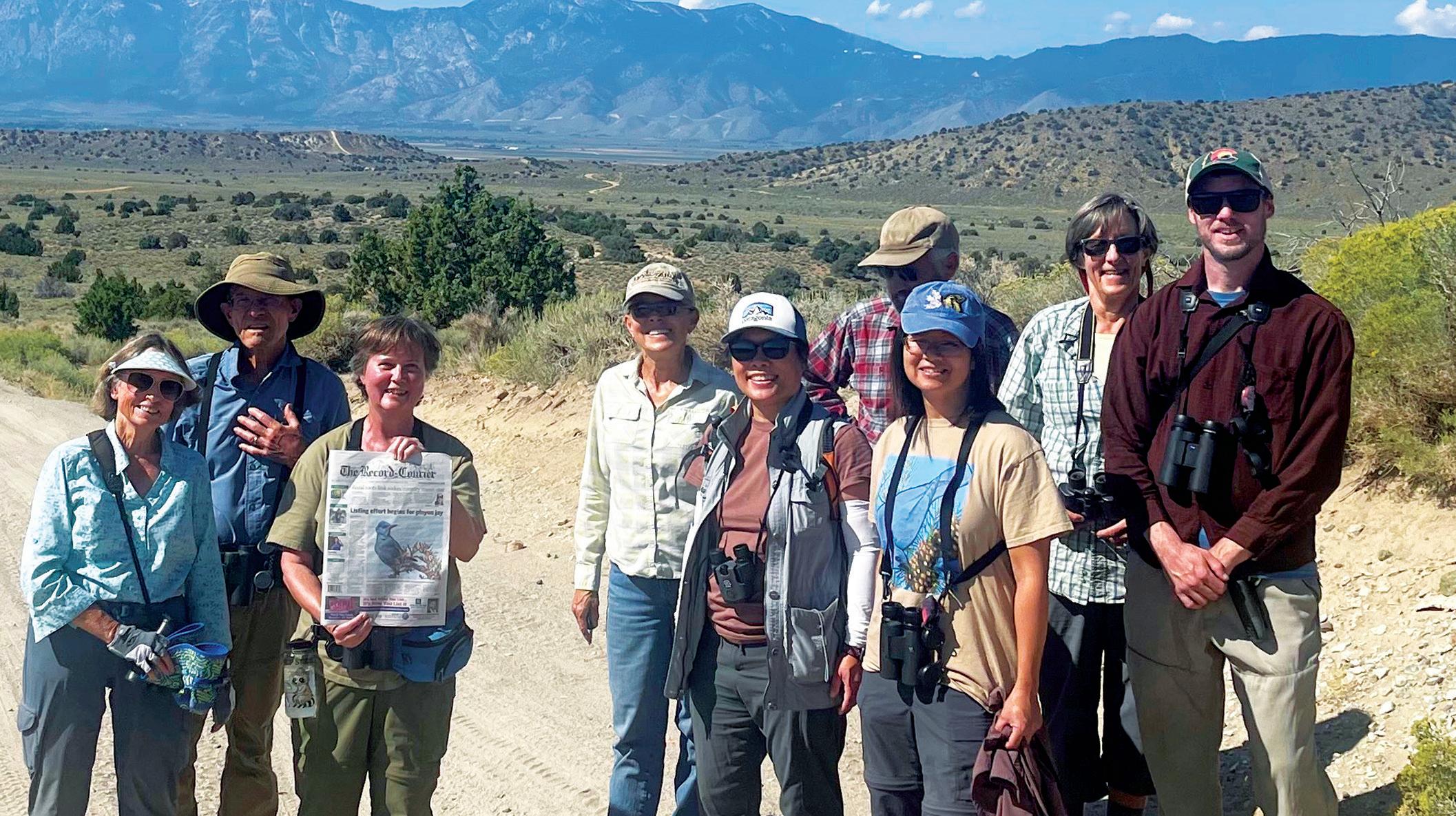
bark for caches (of pine nuts) or probing the ground for caches, and there’s one watching (as a sentry), and they’re rotating through these duties … and it’s really cool to be that close to so many birds,” Bohman says.
He talks about the “cohesive structure” of the flock, how the birds are “very obviously communicating things to each other,” how you can see the different roles of individuals “play out in real time.”
Listening to Ned talk enthusiastically about pinyon jays, I feel a bit like I’m hearing a version of myself, only with a deeper knowledge of the jays than I have. His description of being in the middle of a flock, in particular, feels exactly right. But what really strikes me is that almost everything he said about the jays could have been about humans. Large social groups covering huge areas. Cohesive structure. Obvious communication. Individuals rotating through duties. That is the jays, and that is us.
Other details of the lives of pinyon jays add to the analogy. Most of the time, pinyon jays move around in flocks of less than 100, but at times, those groups fuse into much larger ones, just as, in some human societies, people mostly live in small bands but sometimes gather into much larger groups. A nesting pair of pinyon jays often will have “helpers at the nest,” the pair’s offspring from previous years, mirroring human families where older kids help raise younger ones. When young pinyon jays leave the nest, they immediately band together with the young from other nests, and several adults look after the whole group, like a mobile daycare center. And the pinyon jays in a flock apparently all know each other, with each bird recognizing its place in the group hierarchy—again, much like people (even those who don’t like hierarchies).
I don’t want to push this analogy too far,
14 | RN&R | March 2024 | RenoNR.com
Lahontan Audubon Society volunteers and Great Basin Bird Observatory biologists met for a training session for the pinyon jay community science project in the Pine Nut Mountains in September 2023. Photo/Kayla Henry Top photo/Alan de Queiroz
but I think it’s safe to say that pinyon jays are more pervasively social than any other Nevada bird species. A flock of pinyon jays might seem just like any other group of birds, like gulls hanging out in a parking lot, or robins crowded into a tree to gobble up fruit. But there’s a real and critical difference: Flocks of gulls, robins and most other birds are just temporary gatherings that may not even last through the day, much less through many years. A pinyon jay flock is together, because togetherness, for them, is a way of life.

Every spring, hundreds of birdwatchers drive along predetermined 24.5-mile routes all over the U.S. and in parts of Canada, stopping each half-mile to count every bird they see or hear, making a total of 50 counting points per route. These volunteers—aka community (or citizen) scientists—are working for the North American Breeding Bird Survey (BBS), a program jointly run by the U.S. Geological Survey and the Canadian Wildlife Service. BBS volunteers have been driving these routes since 1966, long enough to record major changes in bird populations, and long enough, as it turns out, to show an alarming trend in the total population of pinyon jays.
The most recent BBS report, covering 1966 through 2022, estimated that the overall number of pinyon jays fell by some 70 percent in that time. The estimate isn’t precise, but there is no doubt that the drop has been very large. John Boone, a GBBO biologist who has examined those results carefully, said the actual percentage could be “60, 70, 80,” but even the most optimistic number represents an enormous decline. Also, in the core parts of the species’ range, including much of Nevada, the dropoff has been especially pronounced.
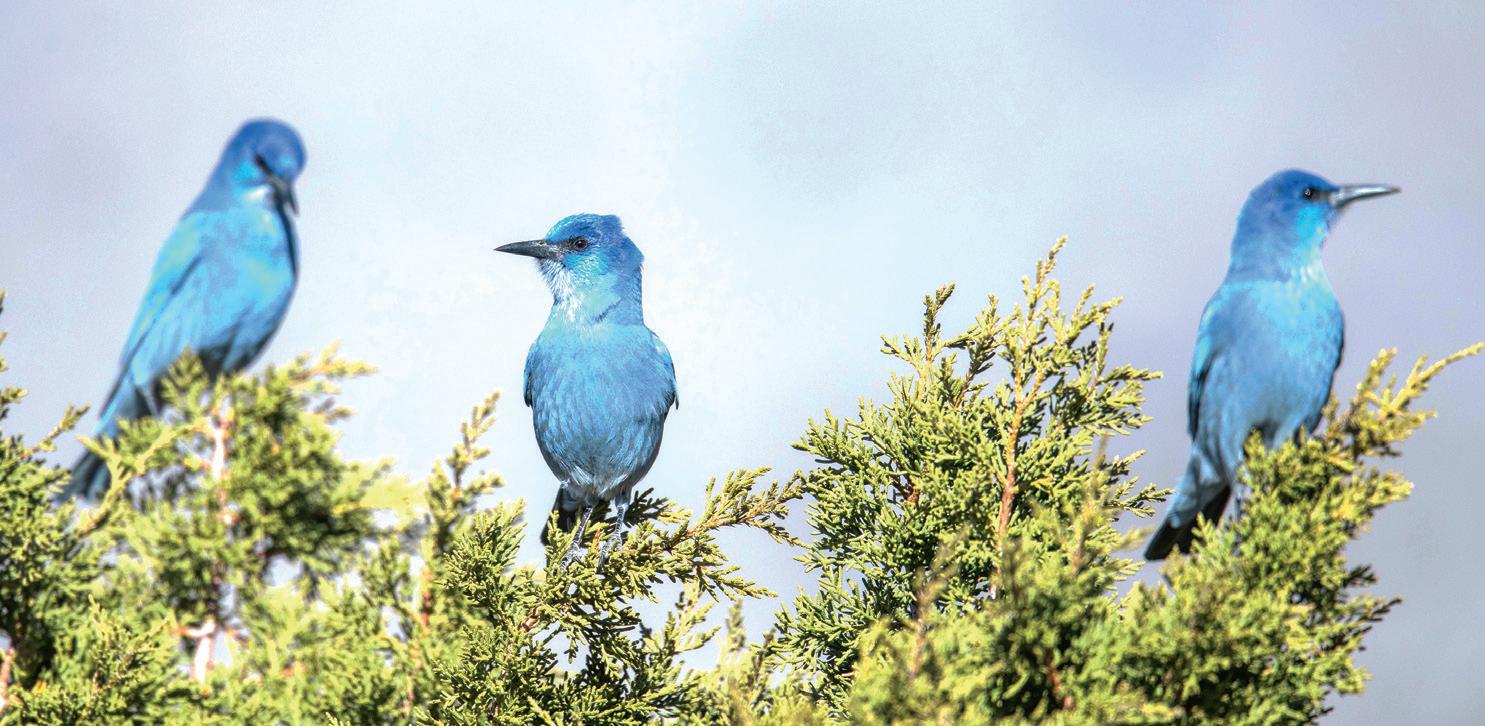
Bohman, community scientists will also be a vital part of the next step in the conservation of this species.
That next step is figuring out why pinyon jay populations are declining. At the moment, it’s a mystery. Pinyon jays rely heavily on the seeds of pinyon pines for food, so you might think the problem is just the loss of these trees—caused, for instance, by wildfires and government tree-removal projects. But pinyon-juniper woodlands have actually expanded in much of the pinyon jay’s range, so it can’t be as simple as that. John Boone and Ned Bohman think that climate change is part of the answer, possibly because drought and high temperature can stress trees and reduce the production of cones. They also think that the health of the woodlands, rather than their mere persistence, is a key.
When young pinyon jays leave the nest, they immediately band together with the young from other nests, and several adults look after the whole group, like a mobile daycare center.
John and Ned also believe that more data is required on where the jays are, and what they’re doing, but obtaining that data will not be easy. As Diane Wong-Kone, executive director of the Lahontan Audubon Society (LAS) told me, you need more eyes out there looking and covering a large space, “because that’s what these birds do—they cover very large spaces.”
conducting pinyon jay projects and had the expertise for collecting and analyzing the relevant data, and the LAS had a membership full of people who liked to get outside and watch birds.
The Pinyon Jay Community Science Project was born, with GBBO biologists training LAS volunteers to collect data on the location and behavior of the jays. That data will eventually be linked up with habitat and other variables to help understand how pinyon jays are using the landscape. Knowing where the jays are thriving, and where they’re not, is a step toward figuring out why they’re declining. Bohman called the project “the beautiful harmony of a science organization working with a community-based organization.”

Lori and Diane had different motivations for joining the project. Lori hikes more than 1,000 miles a year, often through pinyonjuniper woodlands, and she thought she might as well look for the jays on her outings.
“Anytime I can be looking for something while I’m hiking, I’m all about that,” she said.
Diane lives right by the Peavine jays, and the jay project caught her attention, because she had often seen these birds in her backyard. Not many people around Reno are familiar with pinyon jays, but she knows them well.
What Lori and Diane share is a curiosity about the jays that grows stronger the more they know. Lori talked about tree-removal projects done in Nevada and other states to improve habitats for another at-risk bird, the greater sage grouse, and whether these might be hurting pinyon jays. Diane wondered if pinyon jays, like the ones on Peavine, that live where there are few or no pinyon pines are adapting to use other pine species. Those are good questions without clear answers at the moment.
The concern for pinyon jays is beginning to feel like a movement, and the people involved aren’t all looking at the jays themselves; some of them are focused on pinyon pines and the pinyon-juniper woodlands. For instance, Robin Eppard, an adjunct instructor at Western Nevada College, leads an intensive, weeklong field course in which students evaluate the health of an especially productive stand of pinyon pine near Topaz Lake. And Rhiana Jones, the environmental director of the Washoe Tribe’s Environmental Protection
continued on next page
BBS reports, based on the efforts of thousands of community scientists, were a big part of what put pinyon jays on the radar of conservationists and agency land managers. And, according to John Boone and Ned
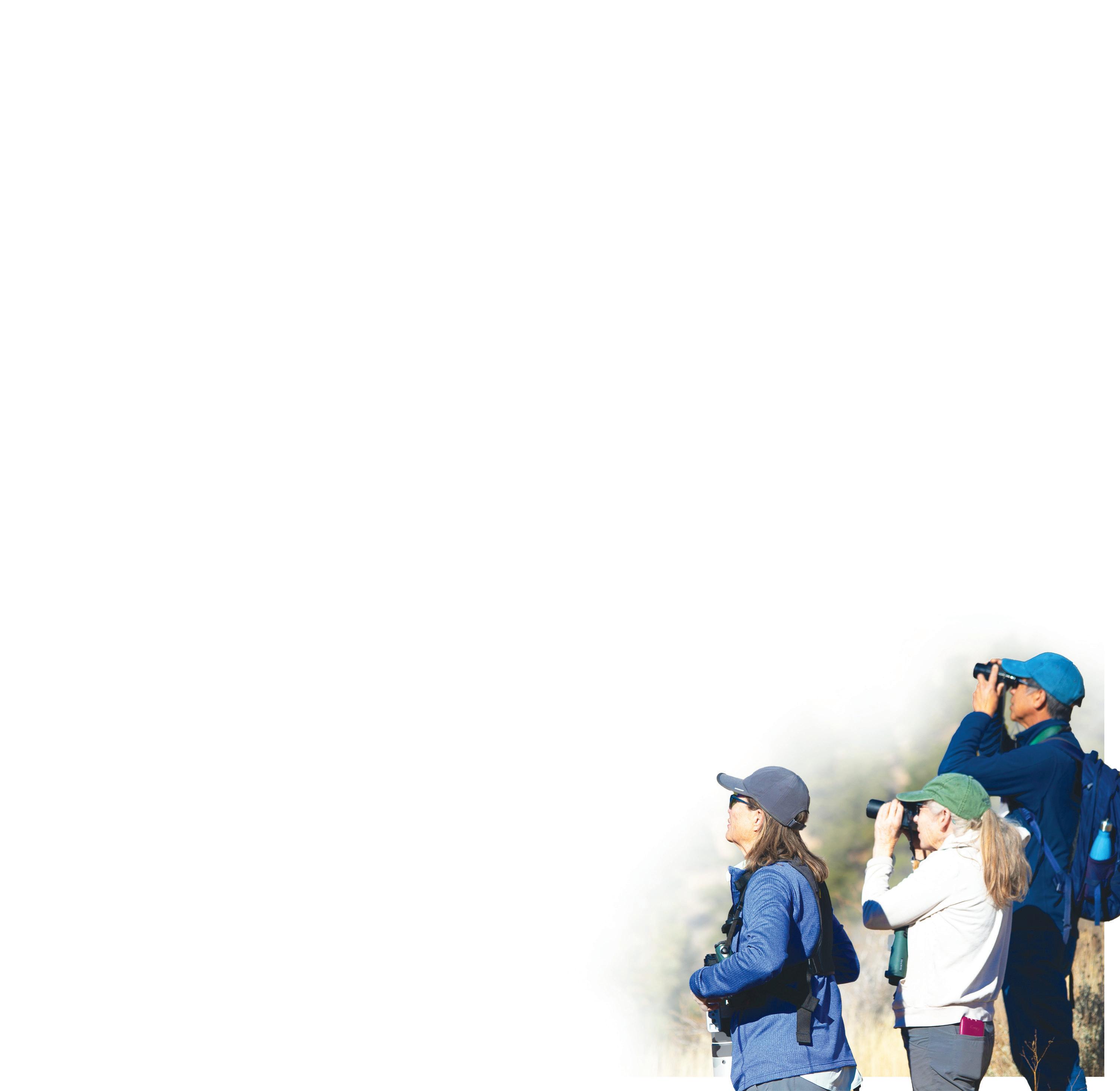
This is where professional science again meets community science. In 2021, there was a meeting between GBBO scientists and Jennie Jones Scherbinski, then the executive director of the LAS. GBBO was already
It’s a January afternoon, and I’m up on Peavine with Lori Bellis and Diane Killeen, two of the nearly 50 LAS volunteers. It’s sunny and unseasonably warm, and even the ground feels welcoming—not muddy, but softer underfoot than usual. We’re talking about the project, but we’re also looking and listening for the jays. However, luck isn’t with us today. At one point, I see a distant flock, but they turn out to be pigeons.
RenoNR.com | March 2024 | RN&R | 15
Lori Bellis, Diane Killeen and Alan de Queiroz search for pinyon jays in the hills above Northwest Reno. Photo/Kris Vagner
When pinyon jays gather in flocks, they tend to stay together long-term, as opposed to most other bird species, whose gathings may only last a day or so. Photo/Jeff Bleam

continued from Page 15
Department, is part of an informal network of agency people and university researchers aimed at restoring pinyon pines and enhancing the pine nut harvest, which has great cultural significance for the tribe. She hopes the pinyon jay is placed on the endangered species list, in part, because that could lead to restoring pinyon-juniper woodlands.

“It takes all of us working on this,” said Rose Strickland, the conservation chair for the LAS. “Problems are too pervasive; everything is connected, and so we need to be more connected in the way that we approach preserving biodiversity instead of just drawing lines on a map (around protected areas). … It really takes a village.”
Will the village succeed? Strickland has been an outspoken environmental activist for decades, and she is perpetually hopeful. “Conservation for me has always been a finger in the dike. And that hasn’t changed,” she said.
point, when I was moving around, many of the birds gave mechanical-sounding “rattle” calls, a sign of agitation used only by females, which they give when a person approaches, and also when a mate gets too close.
Later, at home, I opened up the survey app on my laptop and entered the sighting. A “presence” report. 86 jays. Distance to the flock: zero. Direction to the flock: none.
The “zero” and the “none” mean I was in the middle of the flock, the birds all around me. Reading between the lines, they also mean I was having a transcendent experience, communing with the jays.
I added notes on the birds’ behavior and checked what I entered to make sure everything was correct.
I hit the “submit” button—and I’m done. For now.
The most recent BBS report, covering 1966 through 2023, estimated that the overall number of pinyon jays fell by some 70 percent in that time.
I try to be hopeful, too, but sometimes, I can’t shake off the elephant that’s now always in the room—namely, climate change. Even the most remote and seemingly safe populations of pinyon jays are disturbed by human impacts, because the whole planet is disturbed. I’m picturing a crowd of people with fingers jammed into the dike, and then the water rises too high and pours over the top—that’s the overwhelming effect of climate change.
Maybe if the people stop up the holes for long enough, the waters will subside, although for that to happen, we’ll need the actions of a worldwide crowd. Think globally; act locally; make noise; and vote as if the planet depended on it, because it does.
A few days after meeting with Lori Bellis and Diane Killeen, I was up on Peavine again. This time, a big flock of pinyon jays came through, and I followed them to the pines along a small canyon. Most of the jays were hidden in the trees, but small groups came down to forage, picking at the surface of the ground and probing into the soil, probably retrieving pine nuts cached last year. At one

Alan de Queiroz is a writer and biologist who lives in Reno with his partner, Tara, and their children, Hana and Eiji. He has a special fondness for birds, snakes, obscure insects called jumping bristletails, and the mountains of the Great Basin. His book The Monkey’s Voyage, about the impact of improbable ocean crossings by plants and animals on the history of life, was listed as one of the best science books of 2014 by Amazon.com and was an editor’s choice in The New York Times.
16 | RN&R | March 2024 | RenoNR.com
Pinyon jays tend toward pinyonjuniper, chaparral and scrub-oak woodlands in the Western U.S.
Photo/Jeff Bleam
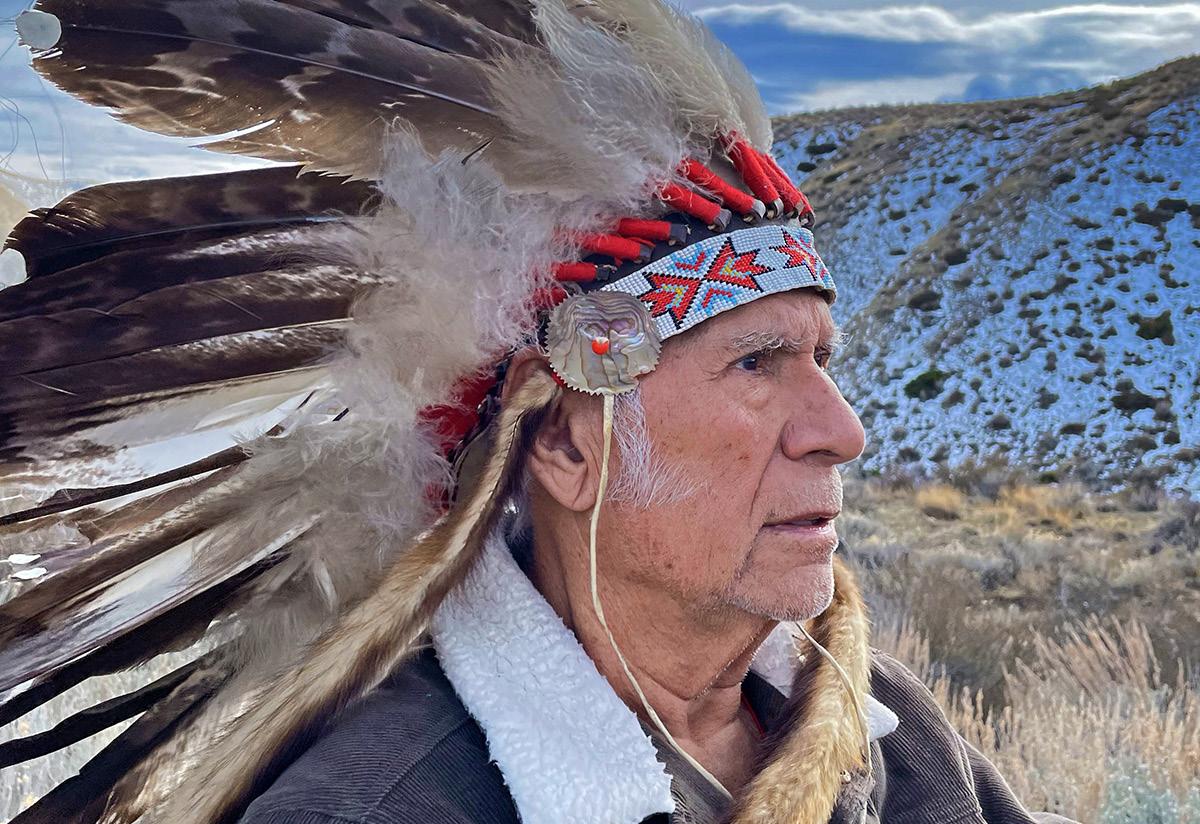
Carrying on the lineage
Curtis Harnar, wanting young Paiutes to have access to their history, helped get his mother’s 1974 book republished
Nellie Shaw Harnar, a Northern Paiute woman who lived from 1905 to 1985, wrote a book titled Indians of Coo-Yu-Ee Pah (Pyramid Lake): The History of Pyramid Lake Indians in Nevada. It was first published by Dave’s Printing and Publishing in 1974, and a second edition by Western Printing and Publishing came out in 1978. The book hadn’t been widely available in many years, so in the fall of 2023, the author’s son, Curtis Harnar, had it republished.
Harnar’s second cousin, Billie Jean Guerrero, had approached him about republishing it. Guerrero’s experience as director of the Pyramid Lake Paiute Tribe Museum and Visitors Center helped push the book project forward.
“Some friends and relatives on the Pyramid Lake Paiute Tribal Council wanted to make the book available for the younger generation,” Harnar said. “They had never seen or heard of it.”
He had always wanted the Pyramid Lake High School library to have copies of the book for students to check out and read, but none were available. “That was my main motivation, so that our young people could read about their history, and it would always be available,” he said.
Nellie Harnar began writing Indians of Coo-Yu-Ee Pah (Pyramid Lake) as part of
her master’s degree in history from University of Nevada, Reno, in 1965.
“She might have been one of the first in a very long time to write a book like this,” Harnar said. “My mother looked to Sarah Winnemucca as a kind of hero as far as literary accomplishments.” (Winnemucca had written Life Among the Piutes: Their Wrongs and Claims in 1883.)
Harnar said his mother was a highly respected schoolteacher. “She did a great amount of research for the book, Indians of Coo-Yu-Ee Pah (Pyramid Lake), going into old files at the Stewart Indian School, because that’s also the Western Nevada Agency for the Bureau of Indian Affairs,” he said.
“Pyramid Lake was her home and her family at the time. She thought this would be a way that she could provide education to Native American Paiutes living at Pyramid Lake, because no one had ever written their history before, only (sharing it) verbally. … Nearly every member of our paternal family was killed by the cavalry in an ambush at Cane Springs in 1865, and my grandfather was the sole survivor at 10 years old. He was so traumatized by the experience that he never told my mother anything about his parents after seeing them killed by the calvary.”
He added quietly: “We came close to extinction.”
Harnar’s grandfather went to Fort Churchill
| BY LUCY BIRMINGHAM
Curtis Harnar, now 84, helped get his mother’s book, Indians of Coo-Yu-Ee Pah (Pyramid Lake): The History of Pyramid Lake Indians in Nevada, re-released last year. Nellie Shaw Harnar, his mother, wrote the book as part of her master’s degree.
and was given to a livery stable man by the name of David Shaw in Dayton. There, Harnar’s grandfather, whose Paiute name was Makes Dust When He Walks, was given the name James Shaw.
“That’s where he received a homeschool education thanks to David Shaw and his family,” Harnar said.
Shaw later returned to the Pyramid Lake Reservation and became a deputy police officer. There, he raised a family of nine children.
“He thought he should have a bunch of kids, kind of to put it in the white man’s face that they didn’t wipe us out after all,” Harnar said with a chuckle. “So that’s one thing about having all those kids—there are Shaws and relatives all over the place now.”
Nellie Harnar was highly praised for her teaching skills and resourcefulness, working as a teacher for the Bureau of Indian Affairs for 37 years. She taught in government-run Native American schools throughout the Western United States. This included two years with the Pima Indians in Arizona, one year at the Reno/ Sparks Day School, one year with the Northern Shoshone in Wyoming, and five years with the Navajo in New Mexico.
“Finally, she was sent to teach at her beloved alma mater, the Stewart Indian School in Carson City, where she remained for 29 years,” Harnar said. “There, she met my father, who was one-quarter Cherokee Indian from Oklahoma.
“My mother was dedicated to her profession and didn’t get married to my father until she was 33 years old,” Harnar said. “And so I wasn’t able to get to know my Paiute grandparents, as they had both passed away before I was born. I wasn’t able to partake in the many Paiute customs and legends passed down by my family. But my mother did pass on much of that knowledge to me as a child when we stayed at the Pyramid Lake reservation during the summertime.”
Harnar also spent time learning hunting and outdoor survival skills from his father and Paiute male relatives at the Fort Independence Reservation in California.
Now, Harnar is holding the mantle. A grandfather and active 84-year-old, he is known as the family historian, wielding an extra sharp memory—with more stories to tell.
The 2023 edition of Indians of Coo-Yu-Ee Pah (Pyramid Lake), published by Keystone Canyon Press, is available at the Pyramid Lake Paiute Museum and Visitors Center in Nixon.
Microsoft Corporation currently has the following openings in Reno, NV (opportunities available at all levels, e.g., Principal, Senior and Lead levels). To access job posting, visit website address listed.
Program Manager; Business Program Manager; Operations Program Manager; Technical Program Manager: Dvlp a scalable & effective technical strategy to support the rhythm of the biz & org goals. Telecommuting permitted ≥50%, but <100%/wk.
http://bit.ly/MSJobs-Prog_Mgr
Multiple positions available. Some positions req travel and/or permit telecommuting. For details (if applicable), including job descriptions & min reqs, salary range & benefits info, and how to apply, access job posting using website address listed. EOE.

The last one showering shouldn’t be left in the cold! GO TANKLESS.



RenoNR.com | March 2024 | RN&R | 17
FREE Quotes Tank Options & Tankless
WESTERN LIT
ARTS

Playing around
Your guide to spring theater productions
As daylight starts sticking around longer, and warmer days draw us out of doors, local theater companies are offering warmhearted comedies, provocative dramas, playful improvisation, musicals and even a touch of the paranormal to shake us out of our winter doldrums.
Mark your calendars for these upcoming shows, and be sure to check the theaters’ websites and social media pages for up-todate information.
Reno
Ageless Repertory Theatre
ART’s spring lineup kicks off with 12 Angry Men on Tuesday, March 12, and Friday, March 15. It’s about a 12-man jury forced to confront their own morals and values as they deliberate the future of a teenager charged with murder.
On April 16 and 19, look for Neil Simon’s The Prisoner of Second Avenue, about a middle-aged man who unexpectedly loses his job after 22 years, disrupting the equilibrium in his home and marriage.
One May 7 and 10, catch Senior Follies, a comedy about nine seniors at a retirement home that proves fun, sexuality and drama don’t stop in your senior years.
www.renolittletheater.org/art-at-rlt
Brüka Theatre
Lauren Gunderson’s The Book of Will takes the Brüka stage March 1-22. This historical drama takes place after William Shake-
In Good Luck Macbeth’s She Kills Monsters, a girl named Agnes discovers her recently deceased sister’s Dungeons and Dragons notebook and the imaginary world that became her sister’s refuge.
Photo/David
Robert
who’s allowed to pick six people to be with him in the afterlife.
Rounding out the spring is the return of GLM’s annual The 10-10 Minute Play Festival, May 31 and June 1.
www.goodluckmacbeth.org
Latino Arte and Culture
Reno’s Latinx arts and culture organization presents El Mago de Oz, a family-friendly, bilingual production of The Wizard of Oz, at Carson City’s Brewery Arts Center (BAC), Saturday and Sunday, March 9 and 10.
latinoarte.org
Reno Little Theater
speare’s death, when his theater friends scramble to secure his legacy.
On the heels of its popular January-February run, Every Brilliant Thing—an honest, uplifting comedy about getting through grief and depression—returns for another weekend, April 4-7.
“The show must go on” is a theme that continues in late April with Moon Over Buffalo by Ken Ludwig. This love letter to the theater is about two fading 1950s Hollywood stars on the brink of a split who receive one last shot at stardom.
www.bruka.org
Good Luck Macbeth
GLM’s jam-packed spring starts with She Kills Monsters, March 1-23, taking audiences into the world of fantasy with Agnes, who discovers her recently deceased sister’s Dungeons and Dragons notebook and the imaginary world that became her sister’s refuge.
April is FOMO month, with four weeks of don’t-miss-out productions: Lee Hardin’s standup comedy on April 5; the Good Luck MacKart Tournament on April 6; an improv championship April 11-13; Sorry I’m Late (and Other Lies) April 18-20, by GLM’s own Mojo Montelongo, one of its parody writers; and Sex Ed: A Sexprov, April 27.
May is New Works Month, featuring three staged readings of new plays on May 3 and 4: My Father’s House, American Foursquare and Murder Mystery at the Mother Regina
Then comes the world premiere of GLM’s next mainstage show, You May Have 6. Running May 10-25, it’s a dramedy about a dead man
RLT’s Broadway Our Way youth students present Generation Pan March 8-17. It delves into life in Neverland after the Darling children’s departure.
From April 12-28, RLT offers The Quality of Life by Jane Anderson, about two couples grappling with loss—one lost their home to a wildfire, while the other lost their child—and how their individual perspectives color their experiences.
Broadway Our Way students again take the stage with Disney’s High School Musical 2 Jr., May 24-June 2.
In and amongst the company’s own shows, look for Midtown Improv Jam performances every month.
renolittletheater.org
TheatreWorks of Northern Nevada
TWNN will present The Somewhat True Tale of Robin Hood at the company’s gala on April 20 at the Pennington Boys and Girls Club, and at the theater’s Spokane Street home April 26-28. It’s a Monty Python-esque portrayal of the original swashbuckling outlaw who, along with his not-so-bright Merry Men, encounters adventures in Sherwood Forest.
twnn.org
Truckee Meadows Community College Performing Arts
From April 18-27, catch Naomi Iizuka’s Good Kids. Set at a Midwestern high school, it explores a casual sexual encounter gone wrong and its very public aftermath. The company has placed a content warning on this for its portrayal of a sexual assault and alcohol use.
www.tmcc.edu/visual-performing-arts/performance-schedule
| BY JESSICA SANTINA
University of Nevada, Reno, Department of Theatre and Dance Sexuality and the pressures put on young people, thanks to technology and social media, also will be addressed in Evan Placey’s Girls Like That, April 12-21. A young woman’s naked photograph goes viral, making her the unwitting center of attention.
www.unr.edu/theatre-dance
Sparks
Restless Artists Theatre
RAT’s spring lineup starts March 11 with a Chautauqua performance depicting Earl Warren, former chief justice of the U.S. Supreme Court.
From March 22-April 1, catch Jen Silverman’s Witch. An agent of Satan shows up in a community looking for some souls to buy. An unexpected meeting with the town witch, Elizabeth, alters his career and messes up his deals.
Another Lauren Gunderson play runs May 17-27. Toil and Trouble is a hilarious riff on Macbeth about three slackers looking to make a quick buck selling fur from an exotic animal, leading to murder, lust and mayhem. rattheatre.com
Carson City/Carson Valley
Proscenium Players, Inc.
Neil Simon also gets a second showing, with PPI’s Fools, May 10-19 at the Brewery Art Center. Leon Tolchinsky has just landed a teaching position in an idyllic Ukrainian hamlet, but arrives to find the town has been cursed with chronic stupidity—and his job is to break the curse.
PPI recently launched free weekly improv workshops on Monday nights at the BAC, for all levels, culminating in free, optional performances on the last Monday of each month.
Email improvatthebac@gmail.com to sign up.
www.prosceniumplayersinc.com
Western Nevada Musical Theatre Company
What if Cinderella has more on her mind than a pretty dress? WNMTC presents the new Broadway version of Rodgers and Hammerstein’s Cinderella at the Carson City Community Center, May 10-19. This new version features a revised, modernized script, as well as new orchestrations and choreography. A 16-piece professional orchestra provides accompaniment. www.wnmtc.com
Wild Horse Productions
For maximum cuteness, look no further than Wild Horse Children’s Theater’s Disney PIXAR’s Finding Nemo Jr. at the BAC, April 26May 5. See amazing costumes, the adorable Disney story you know and love, and an undersea world complete with coral and anemone, projections and even musical performances.
www.wildhorsetheater.com
18 | RN&R | March 2024 | RenoNR.com
ART OF THE STATE

Archaeological remnants
Nick Larsen excavates and obfuscates the Nevada desert to give form to its ghosts
Nick Larsen is not a trained archaeologist, but his eye has been trained toward the archaeological.
The Santa Fe, N.M.-based artist’s practice was profoundly influenced by time he spent working with an archaeology firm
in Reno, his hometown. At the firm, where he helped translate information gathered in the field into finalized maps, photographs and reports, Larsen gained an intimate understanding of the Great Basin via those working hands-on in the region.

“Archaeology, at its most simplified level, is really about bits of cultural material—human-made material—bound within a landscape,” said Larsen. “Certain material found within a certain landscape context can tell a pretty powerful story about who was there, how long they were there, and what they were doing.”
These layers of landscape and cultural material are what inform the collages, textile-based architectural models and image projections that comprise his current exhibition at the Nevada Museum of Art, Old Haunts, Lower Reaches
“They are landscape images, but they also have bits of shirt material or little one-inch buttons that kind of puncture those landscapes,” said Larsen. “They start to suggest a kind of human presence within that space without illustrating anything figurative or breaking what from a distance feels like a landscape composition. It requires getting up in there, getting close.”
Like the layered works of the exhibition, the desert itself often requires closer study.
“So often, it is sort of framed as being empty, particularly the Nevada desert, which has a lot of wide-open space,” Larsen said. “But just because something isn’t developed—just because from the freeway, it feels like there’s nothing there—doesn’t mean it doesn’t have any history.”
Some of the desert’s history is so spectral that it remains hidden, no matter how close you get. This is especially true of the history of Rhyolite, the ghost town that provided much of the imagery and inspiration for Old Haunts, Lower Reaches.
Located in Nye County near Death Valley, Rhyolite cropped up in the early 20th century during a gold rush in the surrounding Bullfrog Hills. In the mid 1980s—at a time when the AIDS crisis saw a peak in homophobic hysteria—it became one of three proposed sites for Stonewall Park, a queer community that was
 | BY DELANEY URONEN
| BY DELANEY URONEN
planned by two men from Reno. Among other developmental issues, the desert locale proved plagued by the same anti-gay sentiments as the rest of the country, and their fantasy of refuge was never realized.
“The two men behind this project, they’re looking at a relatively bleak landscape,” Larsen said. “There’s no tree cover. It’s incredibly hot, incredibly windy. And out of some either very visionary place, or maybe a place of desperation, they were able to kind of map onto this landscape the potential for a community for themselves. It’s something very hopeful.”
Larsen said learning about this buried history served as an entry point to a new perspective on familiar landscapes. Despite a lack of certain material traces, possibility and fantasy could be projected onto empty spaces and abandoned structures. Such a perspective poses the question: “If the remnant bits of cultural material in a landscape don’t exist, does the history exist? … How do we think about giving form to something that never existed?”
Aptly, Larsen’s collages are about making do with what’s at hand—a necessity of life in the desert that also animated the dream of Stonewall Park.
An abandoned house recurs as a motif in the exhibition. “I had been photographing it every time I went out (to Rhyolite), and then between visits, it collapsed after withstanding the elements—heat and wind and cold—for decades,” said Larsen. “It felt like a useful metaphor for this idea of someone apart, of someone’s dreams not being able to hold up to environmental pressures.”
Nick Larsen: Old Haunts, Lower Reaches is on view at the Nevada Museum of Art, 160 W Liberty St., in Reno, through Sunday, July 7. At 4 p.m., Thursday, April 4, Larsen will give a talk about his exhibition. Tickets are $15, with discounts for museum members and students. For more information, visit www.nevadaart.org.
This article was originally published by Double Scoop, Nevada’s source for visual arts news.
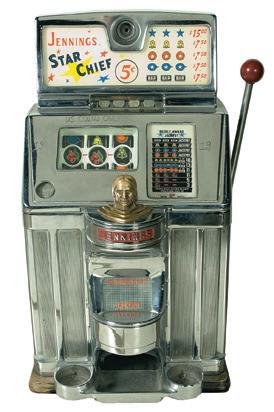
RenoNR.com | March 2024 | RN&R | 19
Nick Larsen at the Nevada Museum of Art. Photo/Eric Marks
CALL TODAY FOR AN APPOINTMENT 775-501-5456 BUY✦SELL✦TRADE✦FIX✦RESTORE All types of antique slot machines and brass NCR cash registers R and H Novelty & Antique Slot Machines LLC.
FILM & TV

Sloppy comedy
Ethan Coen botches ‘Drive-Away Dolls’; Donald Glover’s ‘Mr. and Mrs. Smith’ TV series has more grit and depth than the film
If you were hoping that Ethan Coen’s first narrative film as a director without his brother, Joel, was going to be worthwhile, consider those hopes dashed.
Drive-Away Dolls is a rushed, sloppy story that offers a few laughs, but ultimately shows that Ethan might need a couple more solo efforts under his belt before hitting his stride.
The film offers hints of the brilliance and comedic edge that have propelled the Coen brothers’ movies through the decades, but the overall experience is grating.
Joel made a great movie by himself with The Tragedy of Macbeth. After watching Drive-Away Dolls, I have an idea where the true visionary strengths are coming from in the Coen partnership.
A “lesbian road trip comedy” starring Margaret Qualley and Geraldine Viswanathan, the film starts with a character played by one of the world’s biggest movie stars dying a disturbing, violent death. Things progress into some nonsense involving severed heads, dildos and Matt Damon. Ethan Coen’s directorial style can best be described as frantic, with his film clocking in at a meager 84 minutes. He needs to calm down.
There are a lot of sex scenes, with most of them played for laughs—unsuccessfully. In fact, I’d call a couple of them—especially one involving Qualley’s character and a newly acquired dildo—unsettling and about as erotic as a piece of slightly burnt toast landing on your kitchen floor, buttered side down.
The film is not a total loss. Beanie Feldstein is very funny in a small role as a jilted cop. A
scene where she kicks somebody’s ass while being interrogated is probably the best in the movie. Joey Slotnick is OK in what basically amounts to the Steve Buscemi role in Fargo, and occasional sequences have some pop to them. But overall, it’s a botch job.
There are rumors, as well as real words from recent interviews with Ethan, indicating that he and his brother will make movies together again. I certainly hope so, because this (the first in a proposed trilogy) is the first film directed by a Coen brother that I didn’t like.
Donald Glover follows up his excellent series Atlanta with a new riff on Mr. & Mrs. Smith, the 2005 Brad Pitt/Angelina Jolie movie that depicted them as assassins who must try to kill each other.
The new eight-episode series is very watchable—I binged it in a little more than a day—and, while the show has consistent laughs, it gives Glover a chance to go a little heavier on the dramatic side. The original film had a dark sense of humor, but it had a nice, shiny sheen, while this take has a lot more grit and depth.
Glover plays John, and Maya Erskine plays Jane; they’re both loner types who land jobs as hired killers, and they have to cohabitate in a posh Manhattan home—as husband and wife. A lot happens with them in eight episodes. In the first couple of episodes, they adjust and actually fall in love, becoming a real couple. But things deteriorate quickly, and just as they did in the original film, husband and wife have some epic battles.
Erskine is especially good as Jane, a complicated sort who might have some sociopathic tendencies, but she really does want to settle down. She can also kick some major ass. Glover proves himself to be both an effective romantic lead and action hero.
there’s no need for more.
Mr. and Mrs. Smith is now streaming on Amazon Prime.
Larry David’s cranky bastard last did his improvisational, acerbic riffing on society with Curb Your Enthusiasm’s 11th season back in 2021, and it’s always a question as to whether his series will continue.
Well, it’s back for a 12th and, allegedly, final season. We’ve heard this song before, but maybe this season really is a final farewell. Honestly, David could keep doing this until he’s 100 years old, and I think we’d all be fine with that.
So he’s back, a few years older—and much, much angrier, especially if you tell him the Wordle answer before he gets a chance to play.
In today’s realm of cancel culture and comedy that is scared of itself, this show is a big “Fuck you!” as it delves into subjects such as Larry having to go shopping for a lawn jockey, and J.B. Smoove’s balls. This is take-no-prisoners comedy; there are few things as daring on TV or even at the movies today.
There’s a plotline running through the first episodes that involves Larry becoming a civil rights activist—which does clash a bit with his normal tendency to go shopping for lawn jockeys. It involves a short jail stay and what looks to be a brewing courtroom situation. While I’m not a fan of courtroom dramas, I will make room for a Larry David courtroom drama, even though that didn’t necessarily work well for his Seinfeld show.
I’ve been on and off the Curb train during its long run. (It started nearly a quarter-century ago.) I kind of like that I missed a bunch of them. I have Curb and Simpsons episodes banked for first-time viewing that should sustain me for many years after the shows have run their initial courses. (Except that The Simpsons isn’t going anywhere. That show will likely run for eternity.)
Curb Your Enthusiasm is now airing on HBO and streaming on Max, with new episodes released on Sundays through April 7.

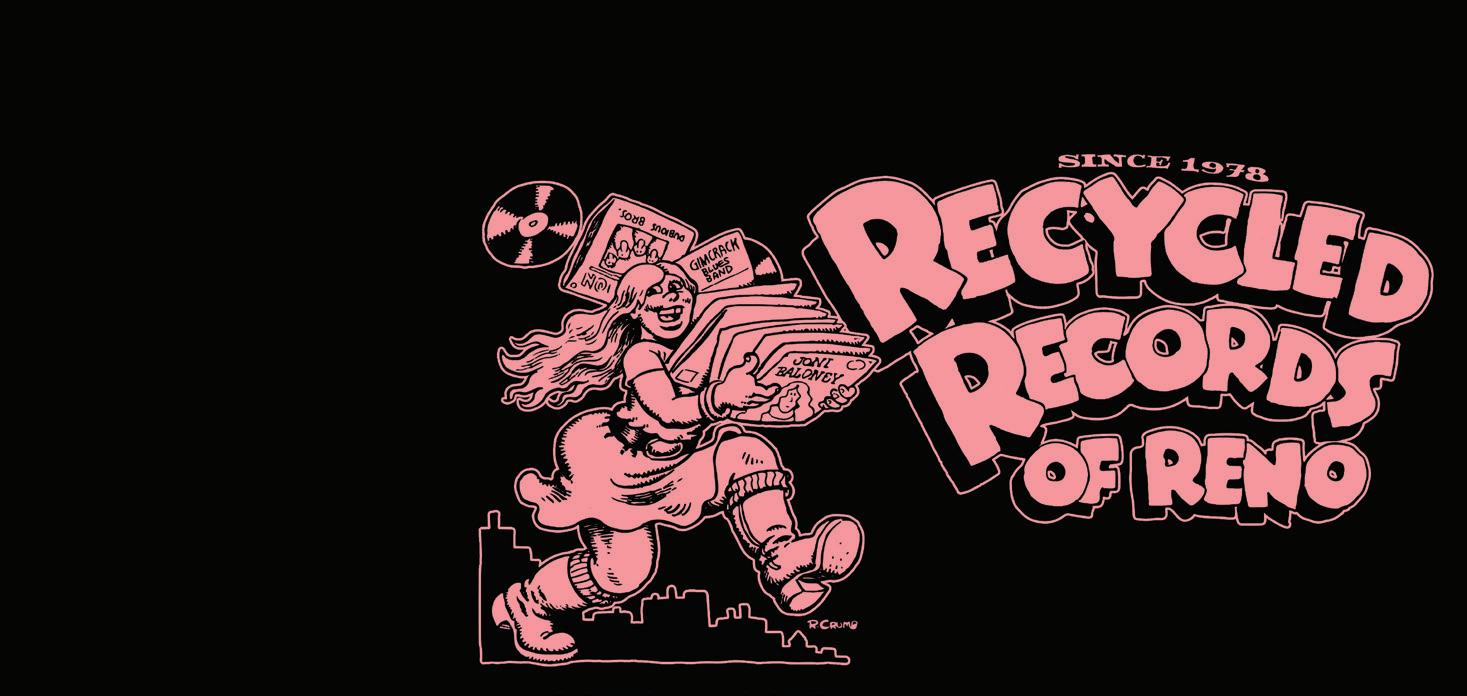

There’s a string of great co-stars and guest stars, including Paul Dano, Parker Posey, Ron Perlman, Alexander Skarsgard and John Turturro. The episode quality varies, but they’re all good, with some being excellent.
Glover and Erskine are one of the more interesting TV duos since Mulder and Scully on The X Files. The ending of the last episode has me thinking this is a one-shot deal, but it’s ambiguous enough to keep things going. I’m actually hoping this is it for Mr. and Mrs. Smith, at least with the Glover and Erskine characters. Their story ends on a perfect note;
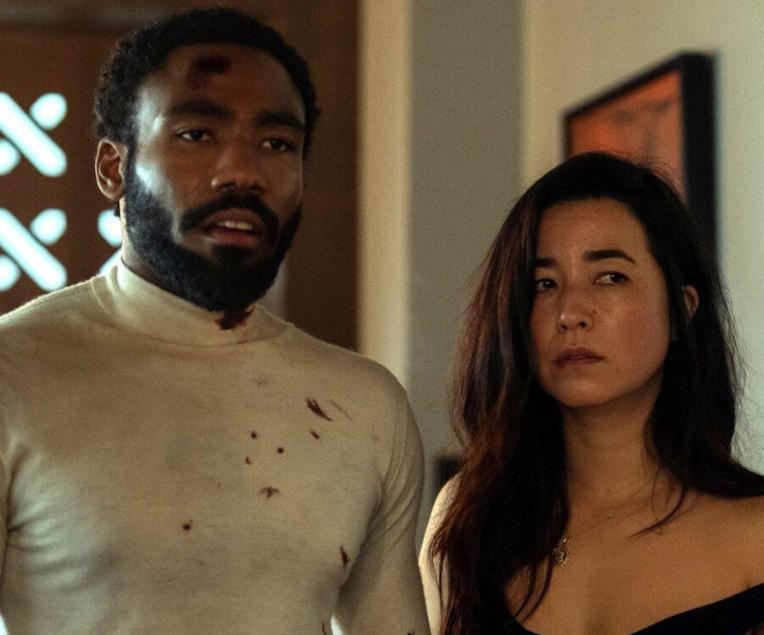
20 | RN&R | March 2024 | RenoNR.com | BY BOB GRIMM
Margaret Qualley and Geraldine Viswanathan in Drive-Away Dolls.
12345
2
Donald Glover and Maya Erskine in Mr. & Mrs. Smith.
4 4
BEST 3 THINGS
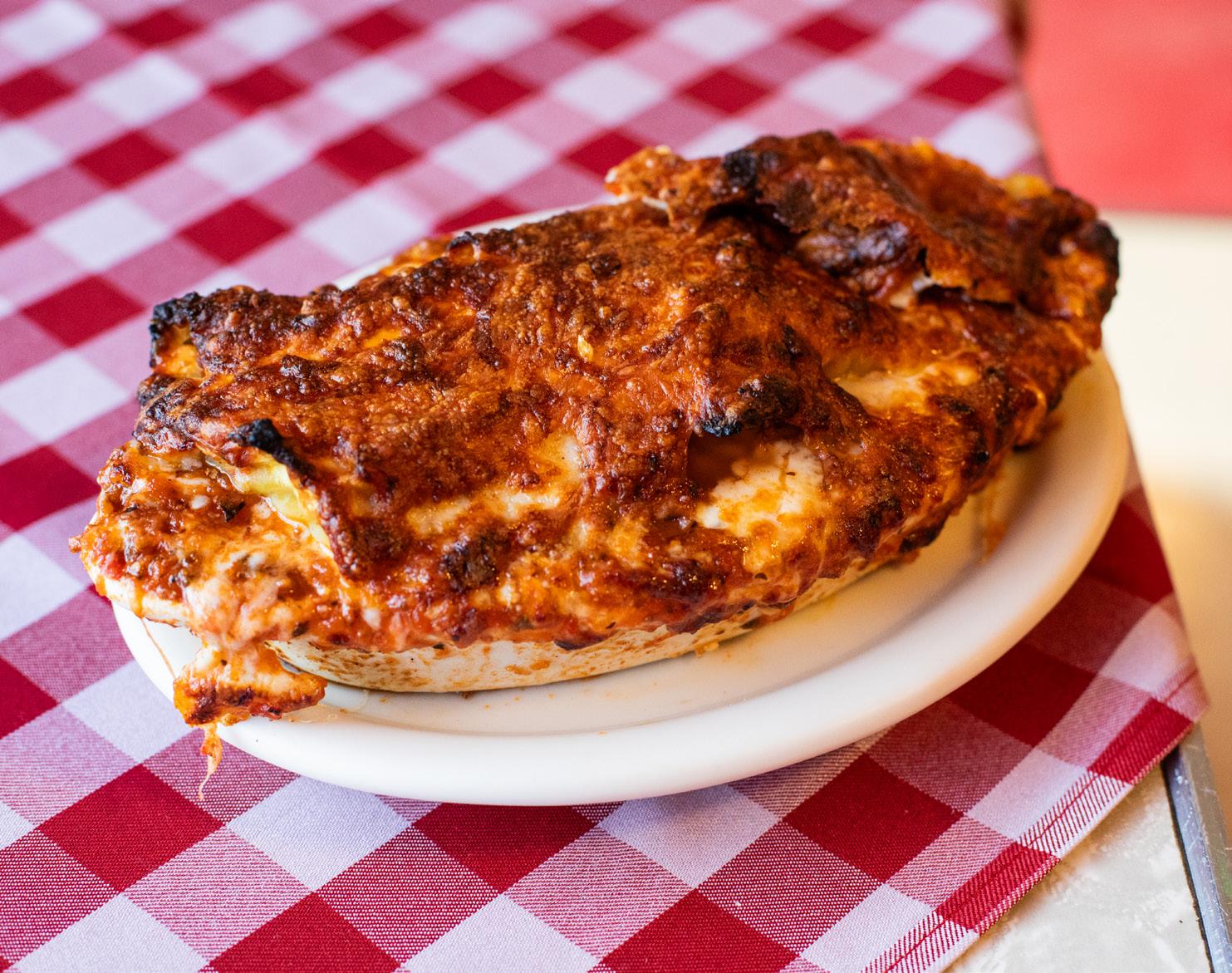
Choose cheese
Old-school lasagna, modern pizza and gooey German comfort can help you get through the rest of winter
March is a weird month. Taxes are being calculated; the days are getting longer; there’s that sudden and intense urge to declutter; and, of course, there’s the decision
on whether to retire your winter coat. In a time of transitions and uncertainties, there remains one constant: cheese—the humble, unwavering white knight which never fails

Casale’s Halfway Club has been serving up Italian standards since long before most of us were born. A rich, nap-inducing lasagna is among the highlights. Photo/Maude Ballinger
to deliver comfort when all might seem lost.
This month’s Best 3 Things features fromage in dishes that are consistently delicious, for when you need that reminder that some things never change.
What: Lasagna
Where: Casale’s Halfway Club, 2501 E. Fourth St., Reno
Price: $21
Contact: 775-323-3979; casaleshalfwayclub.com
If you’ve been to Casale’s Halfway Club, then you know the incredible charm of the 87-yearold establishment that touts itself as “Nevada’s oldest family-run restaurant.” If you haven’t been, then add it to the top of your list. The menu features exactly what you’d expect from a classic Italian joint—things like spaghetti with meatballs, pizza, house-made ravioli and, of course, lasagna.
Casale’s lasagna is like a warm embrace from a good friend: A crock of thick layers of pasta arrives oozing with rich Bolognese, blanketed in a crispy layer of bubbling cheese. It’s delicious, comforting and may require a nap after consuming.
What: Special pizza
Where: Cosmo’s Snack Bar, 253 E. Arroyo St., Reno
Price: $27
Contact: www.cosmosreno.com
Cosmo’s Snack Bar is arguably one of Reno’s coolest new restaurants, with a concise menu
| BY MAUDE BALLINGER
where everything is thoughtfully curated and, as a result, delicious. While I’m a sucker for their crispy pepperoni cup pizza, I tend to opt for their “special pizza” when I visit, because it’s always a surprisingly delicious combination of ingredients.
February’s special pizza featured a chive cream base, kale, sausage, mozzarella and pickled red onions. The bright-green chive-cream base topped with fuchsia pickled red onions might seem strange to pizza purists, but the way the flavors perfectly complemented the nuggets of savory sausage made for a very special pizza indeed.
What: Spätzle with Swiss and Gruyere cheeses
Where: Von Bismarck, 805 S. Wells Ave., Reno
Price: $12
Contact: 775-622-3687, vbreno.com
Whenever I visit Von Bismarck, I have to remind myself that I’m in Reno. If you had told me a decade ago that we would have a posh restaurant with food from “eastern and northern Europe” and elegant branding, ample and intentional outdoor family-style seating, a woodfired grill, and menu items written in German (causing an inevitable point-to-the-menu while ordering), I would have told you that you somehow confused the Biggest Little City with San Francisco. But, thankfully, Von Bismarck is our very own gem.
While Von Bismarck is perhaps best known for schnitzels, no meal is complete without the spätzle with Swiss and Gruyere cheese. In fact, sometimes that is my meal. The spätzle are pillowy little fresh dumplings coated with melty cheeses—the only comparison I can make is that they’re akin to a German-style mac and cheese. I firmly believe that one must order the wood-fire grilled sauerkraut in tandem with the spätzle for the perfect bite, but that could just be my German ancestry talking.
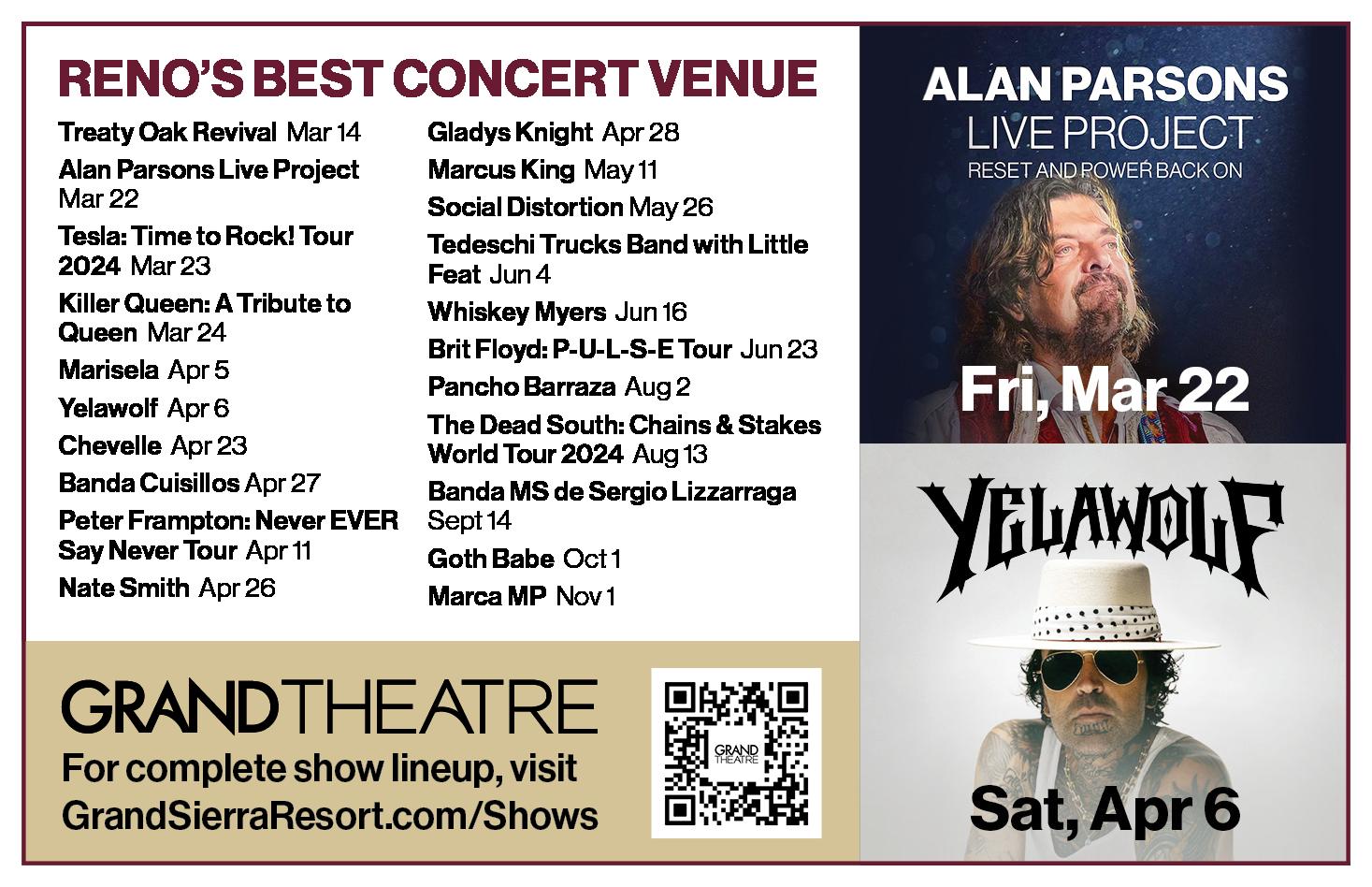
RenoNR.com | March 2024 | RN&R | 21
Meet other founders and prep your biz for 2024! Come to the free BA founders workshop and roundtables. Light refreshments served. 9 to 11:30 a.m., Saturday, March 9 @ the UNR Innevation Center, 450 Sinclair St., Reno BizAssembly.org
TASTE OF THE TOWN TASTE OF THE TOWN
Happenings
Get your green ready—Shanty Dolan’s is hosting a St. Patrick’s Day weekend celebration at 211 Keystone Ave., in Reno. Starting Thursday, March 14, there will be daily entertainment and food trucks, concluding with the bar’s two-year anniversary celebration on Sunday, March 17, featuring Irish fiddlers in the afternoon, a show by Moondog Matinee in the evening, and a late-night DJ, with drink specials all day long. Check Instagram for details: www.instagram.com/shantydolans.
The Reno Leprechaun Crawl takes over downtown at 8 p.m., Saturday, March 16. Buying a $12 cup gets you $4 drink specials at participating locations, along with access to extras like photo booths and giveaways. For more information, head to crawlreno.com/event/leprechauncrawl.
The Pairings for Programs fundraiser, in support of Sparks Kiwanis programs dedicated to empowering youth in the community, will take place at 6 p.m., Friday, March 8, at the Reno Elks Lodge, at 597 Kumle Lane. Truckee Meadows Community College culinary students will create appetizers paired with hand-crafted mocktails, served alongside wine and beer hosted by Sparks Kiwanis members. The evening includes a raffle, live music by Mark Miller and friends, and a silent auction. For tickets, which are $40, find the event on Eventbrite.
The Depot Brewery and Distillery at 325 E. Fourth St., in Reno, has launched a yearlong program called Helping Hops. It will feature a series of collaboration beers, with a portion of the proceeds going to Northern Nevada charities. The first brew in the series, the Hop(e) Shine Collaboration Lager, was released Feb. 22. For each collaboration beer sold, $1 will be donated. For more information, visit thedepotreno.com.
Openings + shifts
Downtown Reno is getting a new sports bar, DUBS, at 95 N. Sierra St., replacing The Stick. Tristen Houston and Derek Sornson—the duo behind ghost kitchen turned brick-and-mortar Vistro—are behind the venture. The ambiance will showcase ’90s sports memorabilia, and the menu will feature upscale bar food inspired by the casual elegance of Las Vegas sport lounges. “We’re not just offering a place to watch the game; we’re delivering an unforgettable experience full of memories and shared moments,” said Sornson. DUBS is set to open in the spring; www. dubsreno.com.
Lox Stock and Two Smoking Bagels has opened at 25 W. Second St., in down-
continued on next page

Time in a barrel
A look at Chapel Tavern’s proprietary cocktail-aging system
In the competitive world of bars, there’s a constant search to find ingredients that can make an establishment shine, from housemade bitters and blends to one-of-a-kind whiskeys. The search for ways to put one’s stamp on a cocktail is never-ending—but no element of a cocktail is as sought after and elusive as time.
It is difficult to create the character that time can give a cocktail—unless you’re putting very expensive, aged spirits in the glass. Over at Chapel Tavern, the staff have set out to make an evolving cocktail that uses time as an ingredient, no DeLorean required.
Before the COVID-19 pandemic, cocktail mastermind Duncan Mitchell, the previous owner of Chapel Tavern, and current owner Sean Stitt asked themselves: What if you used the old-world method of solera aging to age a classic cocktail?
Solera aging is a Spanish method of barrel aging developed in the 18th century so winemakers could blend younger wine with older wine to get a balanced, more homogenized product. Winemakers would
fill barrels with the product and pull the product out from the bottom; every time they took some out, they added new product to the top. Think of it like this: You make a punch for a party and put it in a container with a faucet on the bottom; people pour their drinks from the faucet; as the container empties, you add more punch to the top—and the party never stops.
“The idea was rooted in functionality, to take the proven methods of solera and apply them to cocktails,” Stitt said.
Why does this complicated aging method make beverages—and, in the case, of Chapel Tavern, cocktails—taste better? Barrel aging does three critical things to alcohol. First, it imparts the barrel flavor and notes of vanilla, spice and caramel, which are all stored in the wood and are only accessible through contact time. Second, it helps evaporate ethanol flavors that make alcoholic beverages seem harsh; some call the liquid that evaporates “the angel’s share.” Lastly, the time in the barrel helps bind the flavors to become more balanced. Just like your soup tastes better the next day, so do specific cocktails when they have time to sit together.
| BY MICHAEL MOBERLY
Chapel Tavern’s new cocktail-aging system, which includes wooden barrels and copper tubing, imparts a boulevardier with flavors that can only be achieved by prolonged contact with barrel wood.
Photo/David Robert
Now take all the benefits of barrel aging a cocktail, and multiply them by 12. That’s what they are doing at Chapel Tavern: Twelve small barrels and a maze of copper pipes now line one of the walls. It’s a system that took a whole team of craftspeople to create.
The principal mad engineer of this concept was Cooper Richardson, who dreamed up a system unlike any I have seen before. The copper pipes allow each barrel to fill the one in front of it, to blend the contents of 12 barrels in harmony. The last barrel fills a holding container, and a pump system fills the topmost barrel with a new cocktail in an artful dance that is equal parts method and madness. (Richardson donated a large portion of his payment for this project to Boosted Diplomas, a nonprofit that he co-founded which strives to increase the graduation rate for local high school students in the foster system.)
The traditions, craftsmanship and general madness only matter if what goes into your glass is delicious. The cocktail that the team at Chapel landed on to fill this system is a variation of the negroni called boulevardier, an equal-parts cocktail made from bourbon, Campari and vermouth. The proprietary and secret version of the Boulevardier that bar manager Mark Nesbitt and bartender Lex Niemann dreamed up is intended to become better in a system like this.
“It becomes necessarily inconsistent,” Nesbitt said. “Each time you come in, it will have different barrel qualities. … It is an evolving cocktail.”
There will be a terroir inherent to the cocktail due to the fact that the system sits above one of the busiest bars in Reno, which causes a change in humidity on busy nights. Temperature changes through the seasons will also affect the drink.
“It’s a living part of Chapel Tavern that tastes like Chapel Tavern and only Chapel Tavern,” Nesbitt said, beaming with pride.
Of all the cocktail ingredients available, ambition is the flavor that impresses me the most. It takes a bold and brave group of folks to invest their time and energy into something like this. No matter what the end product of this project is, the flavor you will taste in the Solera Aged Boulevardier at Chapel Tavern is the ambition of some bar dorks who said, “Let’s try that.”
“We are taking a storied and beloved cocktail and, through local artists and a few insane people, creating something you can’t have anywhere else,” said Stitt.
22 | RN&R | March 2024 | RenoNR.com
LIQUID
CONVERSATIONS

Learning curve
After trial and error, Kathie and Bob Russell of Palomino Vines helped launch Northern Nevada’s wine-grape industry
In 2017, Kathie and Bob Russell bought five acres of land in Palomino Valley and began building their dream of owning a wine vineyard.
The dream grew from their love of visiting the Napa Valley back in the late 1960s and early 1970s, before Napa gained international notice as a quality wine-producing area. (That happened, in part, in 1976 due to a blind-tasting event now known as the “Judgement of Paris.” The 2008 film Bottle Shock is loosely based on this event.)
“Most of the wineries were in people’s garages, and it allowed us the opportunity to literally walk out into the vineyards and ask questions and investigate,” Kathie said. “I was particularly interested in the farming aspect. That was my passion. Bob, at that point, started collecting wine. He was very interested in the different varietals—why was one considered better than another.”
On top of each of these skillsets, they both loved wine-tasting, so they considered themselves natural business partners.
Back in the ’70s, the Russells were living in the San Francisco Bay Area. Bob was working for AT&T, and Kathie was teaching school while they raised their children. They
grew vegetables and grapes in their backyard— but the high cost of land in the region required them to put their vineyard dreams on hold. But things started to change in 2009, when AT&T transferred Bob to Reno.
“I wasn’t ready for the desert,” Kathie said. “We first moved to South Reno because I had to see some trees.”
Bob and Kathie started exploring Reno’s wine, wineries and wine groups. They joined Nevada Vines and Wines (a club that is no longer active), which included wine aficionados, many of whom had vineyards. That’s where they met Joe Bernardo.
Bernardo was one of the co-founders of Basin and Range Cellars in 2018. He is a master gardener and one of the true pioneers in the grape-growing and wine-making community here in Northern Nevada. For several years, Bernardo taught a class on growing grapes and making wine.
“We took Joe’s class, and after that, we really believed we could grow grapes here,” Kathie said. “We still didn’t know where we were going to do it, but we knew we could.”
The Russells shared a Christmas Eve dinner at a friend’s home who lived in Palomino Valley. They fell in love with the area that night—and
| BY STEVE NOEL
Bob and Kathie Russell, proprietors of Palomino Vines in Palomino Valley, are largely self-taught viticulturists who now share their skills with others. Photo/David Robert
inside of a month, they purchased five acres there. One year later, they planted their first vineyard, with 352 tempranillo and zinfandel vines. It took a year to discover they had planted varieties that were not right for Palomino Valley’s weather, which is slightly colder than Reno’s in the winter.
In 2019, after this learning experience, the Russells decided to expand their vineyard to 6,500 vines, planting some new varieties, including cabernet sauvignon, syrah and merlot. “They grew fabulously—we lost not one single one. They were gorgeous, absolutely beautiful,” said Kathie.
But in April, all 6,500 succumbed to freezing.
“That was a crushing blow, to say the least,” said Kathie. “There wasn’t much we could do but wait to see if any came back—and about 50 percent of them re-sprouted.”
The Russells persevered, replanting 500 vines a year, with plans to get back to the original 6,500 vines by this year.
In 2022, they had their first harvest. They picked 1,800 pounds of grapes, which they sold to Tim Burke, the winemaker at Artesian Cellars in Pahrump. Last year, the Russells’ vineyard produced more than 4,800 pounds of grapes.
I asked Kathie how she was feeling about the future production of their vineyard. “Very hopeful, very positive,” she said. “We looked at this as a 10-year project. It’s very, very expensive to build a vineyard. We went into it with the idea that we would recoup our costs.”
Kathie has spent a lot of time learning and researching everything she and Bob needed to know to start a commercial vineyard in Northern Nevada. Outside of some fellow local grape growers, they did not find a lot of information or help. They had to learn about things like how to get water rights and where to purchase vineyard equipment.
By now, the Russells have had success both growing wine grapes and selling them commercially. They consider wine grapes a viable agricultural crop for our region—and, after having scaled a steep learning curve, they want to make sure the process of establishing a vineyard is not as daunting for others.
This September, Kathie will teach her third class at Truckee Meadows Community College on wine-grape growing. It’s a four-week course, offered through the college’s EPIC program (Educational Programs Inspiring the Community), that covers everything from vineyard layout to municipal regulations.
Learn more about Palomino Vines at www.palominovines.com.
TASTE OF THE TOWN TASTE OF THE TOWN
continued from Page 22
town Reno. The “hardcore bagel shop” sells items like the Anarchy Bagel (an everything bagel with garlic and onion inside) and the Lox Stock and Two Smoking Bagels plate, which features poached eggs on an openfaced bagel with lox, candied bacon and wilted arugula. For the full menu and online ordering, head to www.ls2sb.com.
Sugar Blvd has opened in the Sticks shopping center at 704 S. Virginia St., Suite A, in Reno. The shop serves ice cream from Hoch Family Creamery in Minden with creative waffle cone flavors like chocolate peanut butter, alongside an array of sweets-inspired gifts from women-owned businesses; thesugarblvd.com.
Dopo Pizza & Pasta has opened a second location in the Reno Public Market at 299 E. Plumb Lane. “We hope that our guests at the Reno Public Market will be able to have a unique experience, with the same warm hug of hospitality that we’ve worked so hard to achieve at our midtown location,” said Eric Schoenfeld-Mineur, general manager; www.dopopizzapasta.com.
Liberty Toast, from chef Mark Estee, is slated to open in the Reno-Tahoe International Airport’s Concourse C this spring. The concept will feature breakfast items like avocado toast. For updates, keep an eye on the airport’s Instagram: www. instagram.com/renoairport.
Thania’s Juice Bar in Incline Village has opened a second location in The Basement at 50 S. Virginia St., in Reno. The menu features organic smoothies, house-made gluten free granola, toasts, acai bowls and house-made almond and pumpkin seed milks. For updates, head to www.instagram.com/thaniasjuicebar.
No City Coffee, the roastery and coffee shop upstairs at the Great Basin Food Co-op, is taking over the back space of the West Street Market at 148 West St., in Reno. It will open as a traditional espresso bar with plans to become a non-alcoholic dry bar in the future. Follow along at www.instagram.com/nocityreno.
Big Chicken has opened a location in Carson City at 444 E. William St. Founded in 2018 by Shaquille O’Neal, Big Chicken offers items like the Shaq Attack crispy chicken sandwich and Cheez-It crusted mac ’n’ cheese; www.bigchicken.com.
Fourk Kitchen at 4991 S. Virginia St., in Reno, is up for sale. The current owners announced that due to family obligations and health complications, the location will either be sold or turned into a franchise-like operation. Stay tuned to www.instagram. com/fourkkitchenreno for updates.
Have local food, drink or restaurant news? Email foodnews@renonr.com.
RenoNR.com | March 2024 | RN&R | 23
WINE

People behind the pies
Three local pizza purveyors talk about what drives them
Pizza. We Americans consume about 3 billion pies per year, according to the National Association of Pizzeria Operators. That is more than 8 million per day, or a staggering 350 slices per second (depending on the number of slices per pizza, of course). This insatiable appetite for pizza means
that more than 17 percent of all restaurants in the U.S. are pizzerias—serving styles such as traditional New York, Chicago deep dish, Neapolitan, California, tavern (Chicago’s thinner variety) and Detroit.
In the past few years, the Reno pizza scene has grown tremendously, with great examples of

Pizza Collective owner Johnny Carrillo tosses a circle of dough next to the woodfired pizza oven. Photo/David Robert almost every expression now within easy reach. But what about the people? Who are these purveyors, and how did they come to their places in the local pizza pantheon?
To find out, we visited a few of the most popular shops in town, spent time with their owners and shared a slice (or two), seeking to discover their “secret sauce.”
The Pizza Collective
148 West St., inside West Street Market, Reno www.thepizzacollectivereno.com
Owner: Johnny Carrillo
Pizza philosophy: “Keep it simple and do it well”
Culinary inspiration: His mom Go-to pie: Margherita with sausage, garlic oil and crushed red pepper Johnny Carrillo came to pizza through his family’s love for food. Growing up in New Orleans and Southern California, he was raised with great examples of regional foods. A few years back, while working at Prema Farm—an organic, sustainable operation in nearby Loyalton, Calif.—he met the owner of The Pizza Collective, and over several conversations out in the fields, he decided to buy it.
Since taking over in 2020, Carrillo and his team of three have sought to elevate pizza through a focus on quality ingredients—like wild-fermented yeast, all-sourdough crust, farmfresh produce and ethically sourced proteins. Carrillo’s obsessiveness extends to wood-fire baking, too, down to the types of hardwoods— oak, cherry and pecan—he uses in his handbuilt Stefano Ferrara oven. Smoke, temperature and ash all impact the product.
Inspired by artisanal Neapolitan pies and pioneers like noted New York pizzaiolo Anthony Mangieri, Carrillo is always searching for ways he can strip a pizza down and have it still be delicious. He strives to carry on the standards of the famous “pizza Napoletana” and give Reno locals a chance to experience this traditional classic.
R Town Pizza
180 W. Peckham Lane, No. 1100, Reno www.rtownpizza.com
Owner: Marvin Kinney
Pizza philosophy: “Pizza creates community” Culinary inspiration: His parents Go-to pie: The “Axel Foley”—Detroit cheese blend, olive oil, fennel sausage, onion, Calabrian chili, arugula, Parmesan and vegan hot honey
Marvin Kinney grew up in food. With both parents in the industry, he was bussing tables at 13 in Seattle, and by 17, he was already managing a restaurant. Having also worked in
| BY DAVID RODRIGUEZ
Reno, he thought it would be a great place to open his own shop. When the former Pirate’s Pizza space became vacant, his dream was off and running.
R Town opened in March 2022, and Kinney chose Detroit-style, a previously little-known pizza style featuring a square shape with crispy cheese edges and punchy toppings. R Town has rapidly become a Reno favorite, garnering a spot in Yelp’s Top 100 U.S. Restaurants 2024.
On social media, Kinney chronicles—often, and in detail—the ups and downs of pizza, parenthood and owning a small business. While the struggle is real, his belief in his mission is, too. Kinney remembers that when he was a youth, his local pizza shop offered free slices and access to video games after school, which created a sense of safety and belonging. He strives to re-create this sense of security in his own shop. One of his key mantras is, “We have to stay human.” He lives up to it by advocating for fair wages for service workers, the LGBTQ+ community and locals experiencing food insecurity.
R Town’s unique and fun pies include special versions for occasions such as Valentine’s Day, Fat Tuesday and Cinco De Mayo, and are served with love and a strong sense of place. It’s Reno (via Detroit) on a plate.
Smiling With Hope
6135 Lakeside Drive, No. 101, Reno
www.smilingwithhopepizza.com
Owner: Andrew Silvaroli
Pizza philosophy: “Pizza is like a fingerprint. Each one is unique.”
Culinary inspirations: His mother, Robin, and his “big, loud Italian family”
Go-to pie: Cheese with garlic
A Reno institution, Smiling With Hope has built a tremendous following by serving authentic New York-style pizza and hiring and training employees with disabilities.
Under the former ownership, part of the mystique was access: Smiling would often sell out of pizza early in the evening, so scoring a pie felt like a special accomplishment.
The current owner, Andrew Silvaroli, upon leaving active duty with the Army, had no immediate plans to own a restaurant, but as a Reno resident since 1997, he had a good sense of what Smiling meant to the community. When he learned of the original owners’ desire to retire, he, together with his mom, Robin, and his brothers, Patrick and John (both local dentists), jumped at the chance to buy it.
Having been raised in Buffalo, Andrew remembers fondly the delicious food, warm hospitality and sense of family that the pizzerias there provided. The motto up there is “the city of good neighbors,” and his goal is to continue that ethos. The shop hires workers from the disability transition program at Truckee Meadows Community College and supports veterans’ groups and sports for young people with disabilities.
24 | RN&R | March 2024 | RenoNR.com
FOOD
MUSICBEAT
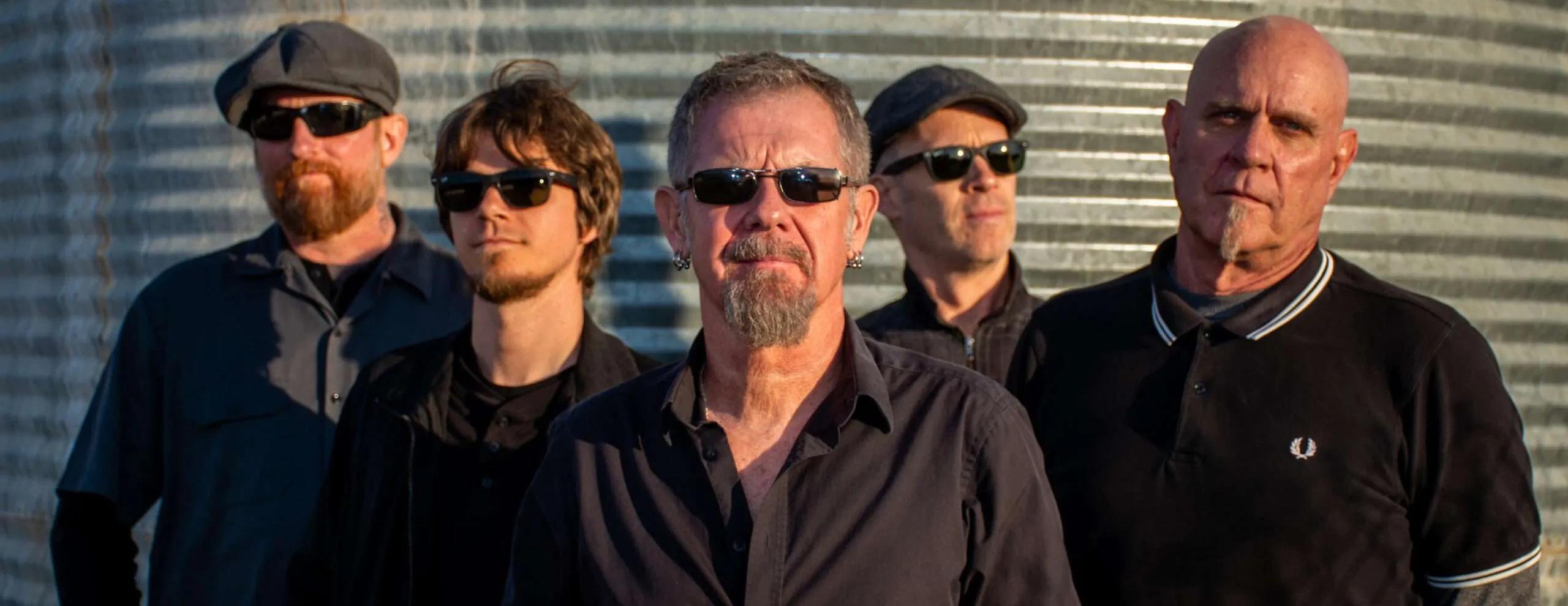
Unconventional Celtic
The Young Dubliners plan to celebrate St. Patrick’s Day a little early at the Nashville Social Club
Few music groups are as misunderstood as the Young Dubliners.
Being from Ireland, having thick accents and using “Dublin” all signify a heavy connection with Irish music—but the group is not a one-trick pony. Celtic rhythms and traditional sounds serve as an influence as the Young Dubliners attack blistering punk rock jams (“Waxies Dargle”), softer ballads (“I’ll Tell Me Ma”) and pop-rock adventure themes (“Foggy Dew”).
The band is a Reno area favorite, and is performing at the Nashville Social Club in Carson City on Thursday, March 14.
“There are certain areas that, if you told me they were going to be hotspots for the band 20 years ago, I wouldn’t have known, because not being from America, I honestly hadn’t ever heard of Carson—but we’ve had very great fortune in certain areas, and Reno’s one of them,” frontman Keith Roberts said during a recent phone interview. “Carson City became sort of an additional gig when they started having us do Levitt (AMP Concert Series) performances, and for some reason, we seem to click with that audience, and the gigs are always great. … It’s a fun little town for us to go to, and it’s the busiest weekend of our entire year, so the fact that we were able to get it in at a good time slot was a good thing for us, because for Paddy’s Day weekend, you’ve only got three or four shows, tops, you can get in there, so they are usually places we like.”
The band always has a busy March, even if their music isn’t consistently Celtic.
“I’m sure it’s very similar for my mariachi brothers who get a call about May 5 constantly,” Roberts said. “I even posted during COVID, ‘To my Mexican musician friends, I feel your pain. I was where you were on March 17, no gig for the first time ever.’”
The Young Dubliners began in 1988 in Southern California.
“When we started, there really weren’t many bands doing what we were doing,” Roberts said. “You had Irish ballad bands and traditional bands, and … The Pogues emerged; The Waterboys emerged, and bands were suddenly putting Celtic stuff with drums and rock and punk and everything else. It was really an eye-opener for my generation, because that would have been considered blasphemy in our parents’ era. I didn’t jump on a bandwagon, so to speak; I just was over in America trying to get a rock band going, and I found that I was being drawn towards Celtic rhythms, and I started to miss home a little bit more. Once I heard Big Country playing fullon Scottish-Celtic riffs on electric guitars, it just blew my mind, because it was a blend of where I’m from and what I love to do.”
Roberts said he’s a firm believer that genres can, and should, mix with each other.
“A lot of our songs have a very small Celtic influence, and then there are other ones that are very Irish-sounding,” Roberts said. “We’ve ironed out our own niche, but it’s amazing to me the amount of kids who are finding us through social media platforms, where they’ve found a different band, and we’re immediately suggested as something they might like. Very often, they’ll come to our gigs and say, ‘… I didn’t re-
alize that there was a band like you that played a lot of the punk stuff hard, but then played a lot of rock stuff, and then had a lot of softer stuff, and very Irish.’”
Rather than embracing what became today’s conventional Irish rock, Roberts saw a more original and fulfilling way to craft songs.
“There were many, many, many, many opportunities for us to go down a road that might have created a bigger fan base for us and might have lifted us up a few levels, but in all honesty, it would have meant selling my soul to do it, and I would have had to become an imitator instead of a creator,” he said. “There are a lot of people who would slap me in the back of the head and say, ‘Why didn’t you do what I told you to do? You could be massive right now.’ And I go, ‘Well, we’ve got a great reputation; I’ve got my dignity; and I’ve left a lot of albums that I’m still proud of for my son to always have when I’m pushing up the daisies.’
“Looking back on it now, that was the best move I could have made, because I think had I gone chasing rainbows, we would have been a flash in the pan, and I probably wouldn’t still be doing this now, whereas here I am, 30 years later, sending vocal tracks for my 10th album, and I still feel really excited about the new stuff, and wishing I could go back to being 21 so I have the energy to do all the shit we’re doing, because our tour is massive right now.”
The Young Dubliners have, rather interestingly, become regulars on the On the Blue Cruise, featuring classic rockers like The Zombies, Alan Parsons and Starship.
“It’s an amazing lineup of friggin’ legends,
and what the hell we’re doing on it, nobody knows, but it’ll be our fifth year,” Roberts said. “It’s funny, because the whole big thing in the ’60s and ’70s was, ‘Hope I die before I get old.’ If you’d said to any of these bands that ‘you’re still going to be doing this in your 70s,’ they’d be like, ‘What are you talking about?’”
It’s been more than a decade since the last Young Dubliners album, but Roberts and co. are aiming to release something this year.
“We’re looking at embracing the more modern way of releasing albums now versus the way we did it traditionally,” Roberts said. “In the old days, you’d work away on a record—it might take months and months and months off the road—and try to get it ready, and then agonize over which song is going to go which in the order, and how many seconds will be between the end of one song and the next. Now that’s all out the window. All people do is pull up your album; they see which tracks look like they’re getting the most attention; they hit those assuming they’re the single; and they’re more than likely are subscribed to Apple Music or Spotify or something, so they’re not individually buying your album or individually buying a single.
“Our greatest difficulty is being able to take that much time off the road to finish an album. However, what we’re very good at doing is going into the studio and starting a track and getting it almost done, and then going back over and doing all the polish and adding all the magic to it. Because of the digital age, you don’t have to set up your drum kit and get every single drum take that day, because you will be able to re-create that sound again … It opened up the door for me to say to the band, ‘Let’s push forward on four or five tracks, then let’s start releasing tracks as we’ve got them done, and let each song have a life.’”
Young Dubliners are also integrating a pledge element to help with recording and production costs. This is the second time the band has had the financial help of fans to produce an album, as 2014’s Nine was completely crowdfunded.
“At the end of it, when the record is completed, we will do a very traditional release on CD and vinyl, and all the people who contributed to the pledge will get copies of all of that, but meanwhile, we will release songs first exclusively to the people who supported the album, so they’ll get a while to listen to them and know they got the song before anybody else did,” Roberts said.
Young Dubliners will perform at 7:30 p.m., Thursday, March 14, at Nashville Social Club, 1105 S Carson St., in Carson City. Tickets start at $25. For tickets or more information, visit thenashvilleclub.com.
RenoNR.com | March 2024 | RN&R | 25 | BY MATT KING
The Young Dubliners.
| BY MATT JONES JONESIN' CROSSWORD

“Strong Suits”— dealing with another puzzle.
By Matt Jones
Across
1. As of yet
6. Judge’s seat, in law
10. Ray Donovan actor Schreiber
14. Jumper cable terminal
15. As well
16. Give the creepy eye to
17. Remove all the dirt and grime from
19. Server operating system
20. Release
21. Three-part vacuum tube in old TVs
23. “___ Little Tenderness”
24. Becomes enraged
25. Double sextet
28. Borrower
29. 2001 high-tech debut
30. Apt answer for this clue
32. It had a hub at JFK
35. Keanu’s Matrix role
36. What you may need to do to understand the four sets of circled letters
37. Talking computer in 2001: A Space Odyssey
38. Slippery tree
39. Inquisition target
40. Clock feature
41. Kicks out
43. Injection also used to treat migraines
44. Gangsters’ headwear, in old movies
46. Tiger sound
48. Cider fodder
49. EnglandScandinavia separator
53. Golden State sch.
54. They’re unbiased and accepting, and not short-sighted
56. Wine bouquet
57. Expert pilots
58. Rice-___ (“The San Francisco Treat”)
59. Lawyer, for short
60. Put a stop to
61. The Walking Dead villain
THE LUCKY
13 Teree Yount
Also known as DJ TigerBunny
For 24 years, Teree Yount, also known as DJ TigerBunny, has been performing around the Reno area. Her eclectic live show features a few staples, like a vinyl-only set from her massive collection, and an emphasis on unconventional gems you won’t find in other modern DJ sets. She had a long residency at Chapel Tavern and has recently has popped up at places like the Holland Project and Dead Ringer Analog Bar. To find out where she will spin next, stay tuned to www.facebook.com/djtigerbunny.
What was the first concert you attended?
My mother dragged me to too many country-pop concerts, mostly in casino showrooms, when I was young, which I really hated. My first actual personally chosen concert was Joan Jett at the old UNR gymnasium when I was 11.
What was the first album you owned?
Down
1. Rude response
2. “Falling Slowly” musical
3. Ticonderoga, e.g.
4. Took on grownup errands, so to speak
5. Like a phoenix
6. Lightweight modeling wood
7. Out of the breeze, to a sailor
8. Hush-hush govt. group
9. In a satisfied way
10. Thelma’s cohort, in film
11. “Disregard what you just saw ...”
12. Avoid some syllables
13. Bewildered
18. Slyly shy
22. Change color again
24. Peasants of yore
25. Feast
26. European car manufacturer
27. Went by quickly
28. “One of ___ great mysteries ...”
30. Locale in a Clash title
31. “Everybody ___”
(REM song)
33. Home of Baylor University
34. James Patterson detective Cross
36. Hobbits’ homeland
40. Available to rent
42. Tennis shot
43. Role for Keaton and Kilmer
44. Animals, collectively
45. Disney World acronym
46. I Only ___ the Ones I Love (Jeffrey Ross book)
47. Airport code for O’Hare
49. Great British Bake-Off co-host Fielding
50. Make out in Manchester
51. ___ Mode of The Incredibles
52. “O ___ Oscar”
55. “His Master’s Voice” company
© 2024 Matt Jones
Find the answers in the “About” section at RenoNR.com!
My parents had a lot of records, so those were basically my first albums, which I still have. I also bought and kept many disco (and soft-rock) singles when I was into dancing on Dad’s pool table. “Heart of Glass”! My dad’s Supremes blue double LP was definitely my favorite. Equally, so was my mom’s Zombies 45s. I also still have a large quantity of my old K-tel hit compilations.
What bands are you listening to right now?
Mount Kimbie, Warpaint, The Aislers Set, Virginia Wing, Moving Units, LCD, and Satisfact, but I play myself about 10 records a day in my music room!
What artist, genre or musical trend does everyone love, but you don’t get? New country pop.
What musical act, current or defunct, would you most like to see perform live? Bands from the late ’70s in Manchester.
What’s your favorite musical guilty pleasure? I have walls full of great records to enjoy without including anything I think is lame.
What’s your favorite music venue?
The Great American Music Hall.
What’s the one song lyric you can’t get out of your head?
Usually one of the classic traditional children’s songs, because I do story times

at the library. “The ABC Song,” “Head and Shoulders,” “Old Macdonald,” etc.
What band or artist changed your life? How? Lydia Lunch. As a teenager, she introduced me to no wave music and cinema. (Watch the documentary Blank City!)
You have one question to ask one musician. What’s the question, and who are you asking? I already asked Cosey Fanni Tutti a question in 1989, and that question is a secret. ;)
What song would you like played at your funeral?
That’s a really long list. Today, I’ll say “Lowdown” by Boz Scaggs.
Figurative gun to your head, what is your favorite album of all time?
The Pink Opaque by Cocteau Twins.
What song should everyone listen to right now?
“Wax and Wane” by Cocteau Twins.
26 | RN&R | March 2024 | RenoNR.com | BY MATT KING

Patrick Myers plays Freddie Mercury in Killer Queen, which bills itself as the longest-established Queen tribute band. It was formed by art students in London in 1993, and by 1995, Killer Queen’s popularity in the United Kingdom had grown to such an extent that it had a residency in London’s Strand Theatre—becoming the first tribute band to have a show in the West End theater district. Reno audiences can revel in the opulence of Queen’s majestic music when Killer Queen plays at the Grand Sierra Resort on Sunday, March 24.
What was the impetus for starting the band?
We were students at the time—actually at the same university that members of Queen had attended—and we heard that Freddie had died (in 1991), which came as a shock to us. It was just heartbreaking. It seemed like a really natural response for us to start the band as a tribute to Queen.
Do you use vintage equipment for the show?
Our Brian May (Andrew Edwards) plays a Brain May “Red Special” replica guitar. Brian May plays with an English sixpence coin (slightly larger than a U.S. dime)—it has a serrated edge—as a plectrum (pick). They don’t make sixpences anymore, unfortunately, but you can still buy a “Brian May” one, though. We try to get most details right, equipment-wise.
Have you ever received any feedback from Queen?
Queen themselves keeps an arm’s length away from tributes, partly because they’re touring themselves. But Brian May’s website has said some good things about us.
Do you tailor your setlist from Europe to the U.S?
There are a few changes. A track like “A Kind of Magic” is a real crowd-pleaser in Europe, but not as well-known over in
| BY DAVID ROBERT
America, which is a shame, as it’s a great live track. I noticed that Queen bucked that trend on their last U.S. tour, and they played “A Kind of Magic” all through America. I was pleased to see that it finally had its day over there.
What is your pre-show ritual? When do you become Freddy, and when does Freddy leave the building?
I’ve got a vocal warm-up routine, and I’ve got a physical warm-up routine—stretching and squats, all that sort of stuff—and then I pop on the makeup and put the costume on, and then I’m ready to go. It takes me about an hour to get ready. I’m “me” the moment before I go onstage, and I’m “me” the moment I go offstage, so there’s no blurring of identities. The persona that Freddie had onstage was a character in itself; it was a construct. Freddie was very different onstage, but I don’t think that I’m particularly like Freddie offstage in any way, really. He was a unique character. I’ve got training in acting, so stepping in and out of character is easy. I don’t feel that I need to pretend to be Freddy anywhere else apart from onstage and in front of an audience.
When on tour in the U.S., do you have any type of food from England that you miss?
For some reason, I miss tea. I bring tea bags out on tour with me, but the tea doesn’t taste the same in America. The water is different or something. I miss an English “cuppa tea.” That’s a very cliched answer for an Englishman, but there you go. I also bring Marmite with me on tour. Marmite is easy, because you can order that on Amazon.com and have it delivered to your hotel room.
What vision do you have for the band in the future?
We want to do what we’ve been doing for the past few decades, which is travel the world. We like to play in a variety of places. We’re making sure that we do a few arena shows here and there to make sure that the people who want to see us on a grand scale can see something like that, so we try to cover as many bases as possible—shows not just limited to 1,000 or 2,000. We want to stretch up to 5,000 or 10,000. Like, we sell out Red Rocks (Colorado) every year, and that’s about 9,500 to 10,000. It’s great to be invited back every year. That’s a real privilege. We enjoy bringing a little bit of Queen magic to the various stages that we play, and long may we continue, as far as we’re concerned, because it’s a very rewarding show to do.
RenoNR.com | March 2024 | RN&R | 27
15 MINUTES
Patrick Myers
Freddie Mercury impersonator
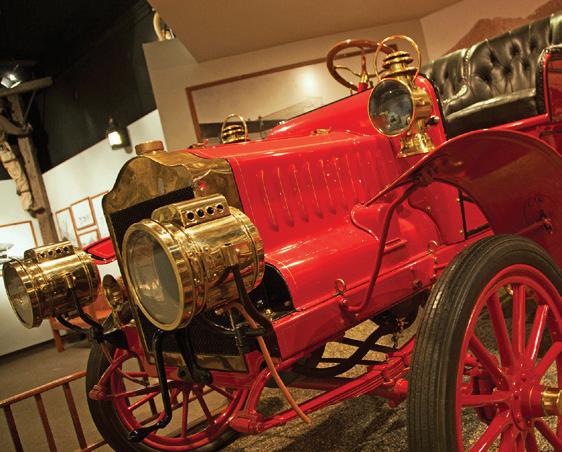


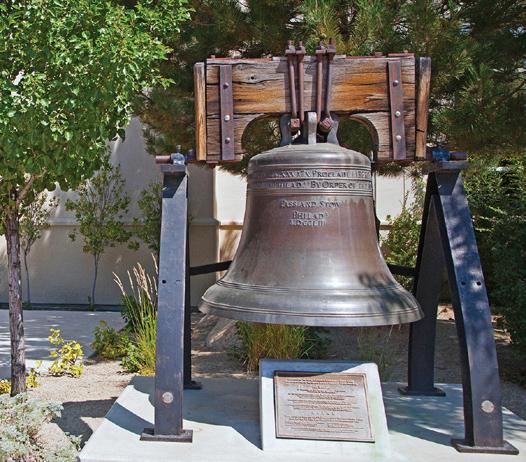

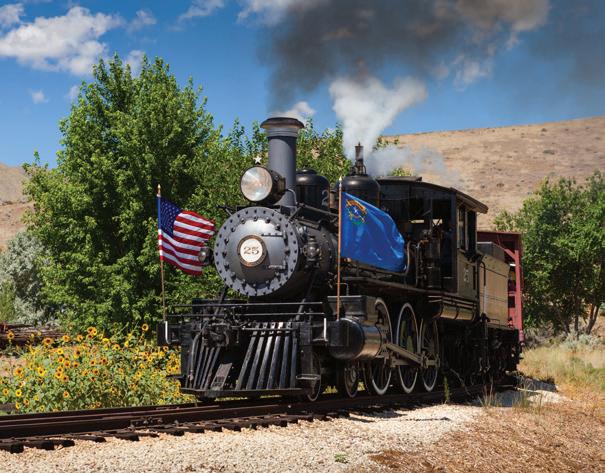

28 | RN&R | March 2024 | RenoNR.com MAMMOTH SIZED ADVENTURE AWAITS.
A MUSEUM MEMBER FOR FREE ADMISSION TO ALL STATE MUSEUMS. Visit NVMuseums.com for museum locations, exhibits, & events.
UNIQUE MUSEUMS ACROSS THE STATE
BECOME
SEVEN













 BY DAVID ROBERT
BY DAVID ROBERT





































 | BY DELANEY URONEN
| BY DELANEY URONEN























